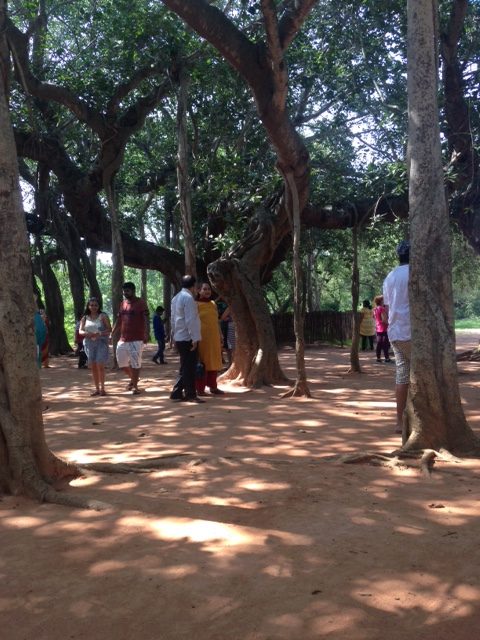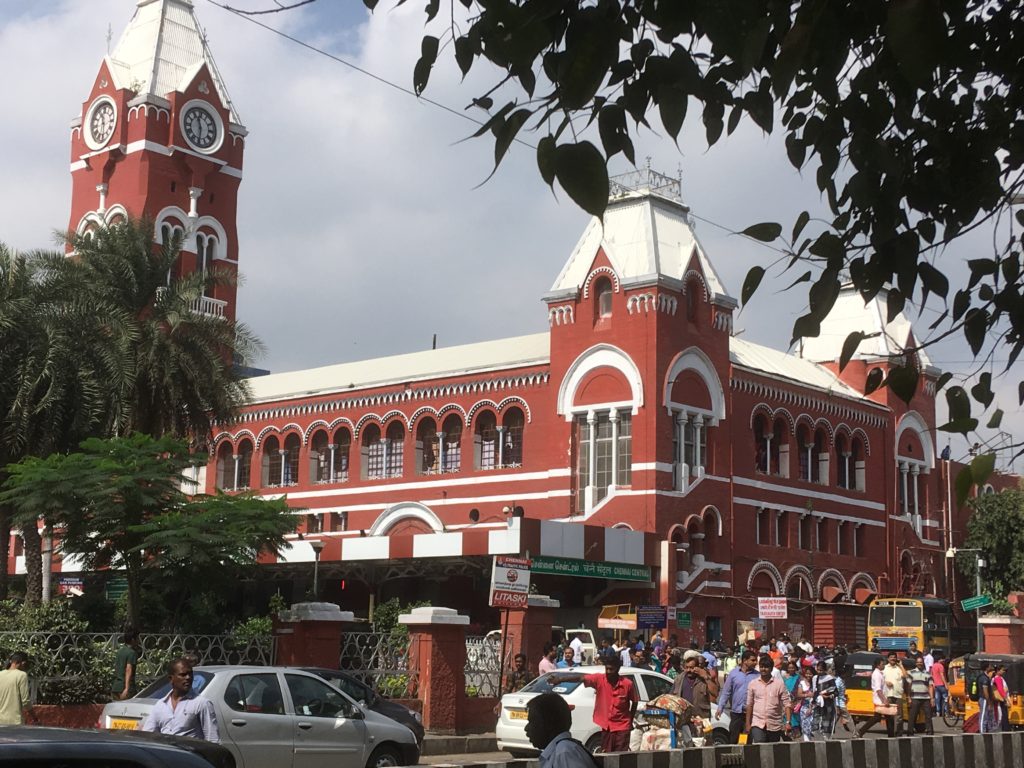
At 5.30am we arrived at the incredibly crowded station, where people lay sleeping on the ground, having meals, or selling almost every commodity possible, for the 8 hour train journey on the Bangalore “Shabtabi” Express. We settled into our extremely comfortable ‘Executive Class’ reclining seats, where wifi, a mains plug for charging, a copy of the Hindu Times and a bottle of water were provided. Just as we were thinking how civilised this was, trays arrived with fruit juice, tea or coffee and biscuits – a sort of wake up drink. The train pulled out at precisely 6.00 am and we spent a happy hour or so watching Chennai’s industrial landscape give way to the countryside and reading our papers, before a simple breakfast and more coffee. It seemed that in no time at all we had arrived in Bangalore, the IT centre of India, where we were joined by families on holiday and then served lunch. By early afternoon, we had arrived in Mysore remarkably refreshed.
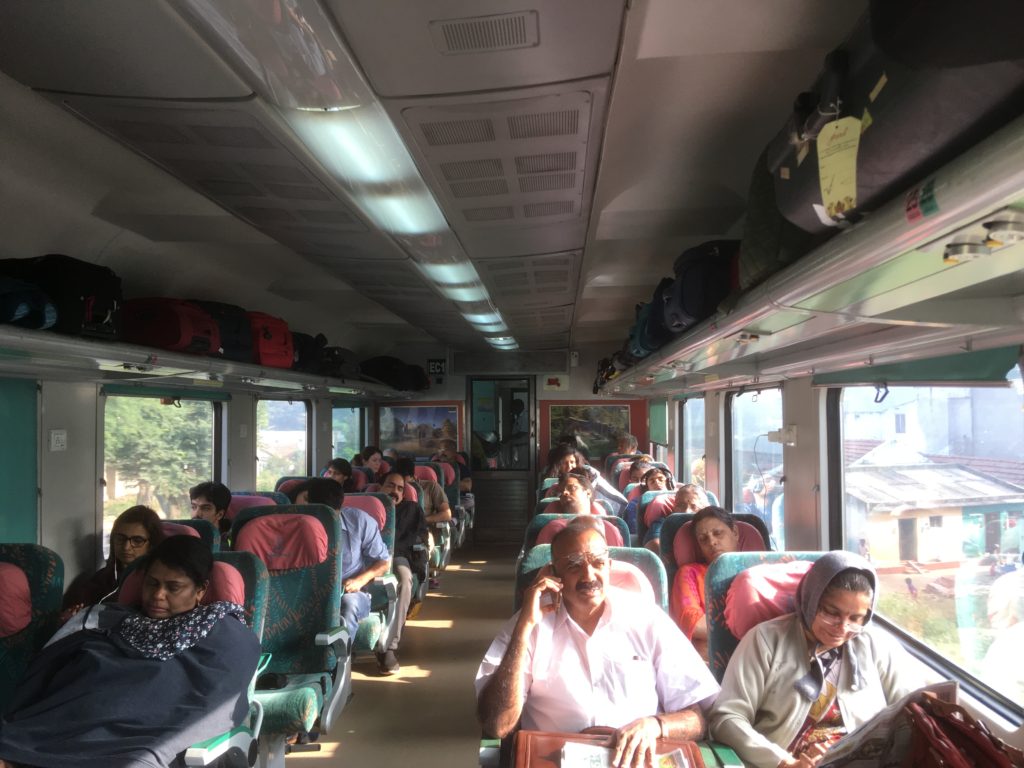
Mysore is delightful, with many old colonial buildings and palaces set along wide tree lined streets. Our hotel had originally been built for English visitors to the Maharaja and we stepped back about a hundred years into a world of gleaming brass, palms in pots and overhead fans, the only thing missing was a punkah wallah.
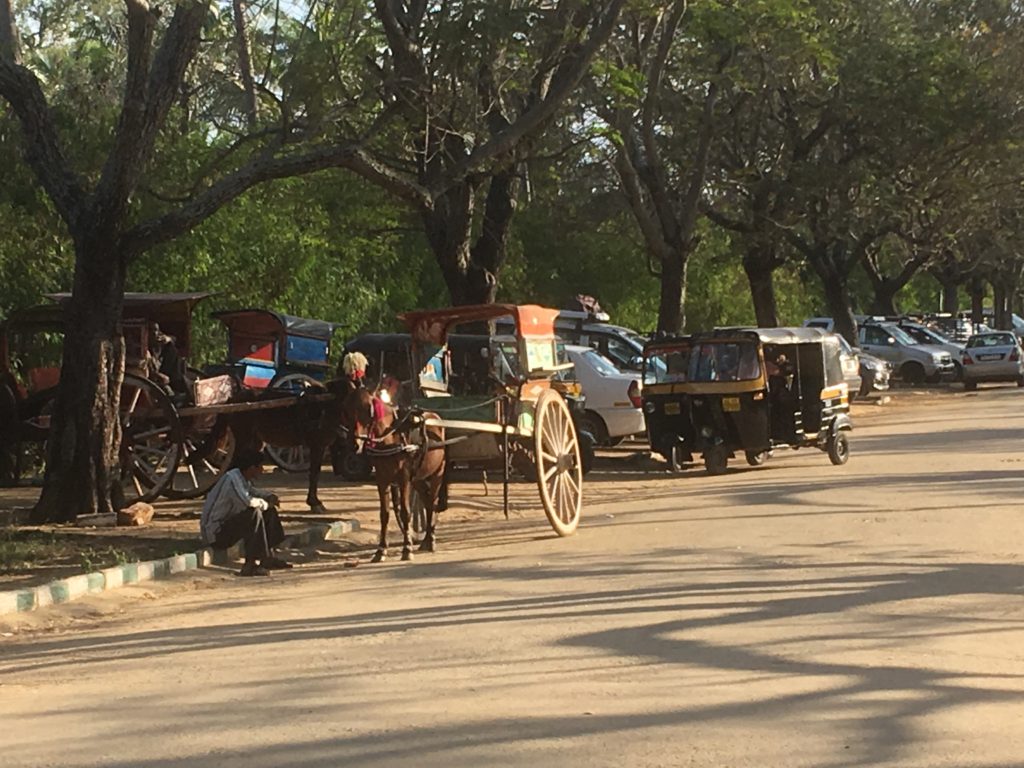
From the train we had seen the remains of the fortifications of Sriringapatnam destroyed by the British in 1799, and we now went to Tippu Sultan’s summer palace nearby, built some years before his final defeat. Decorated with floral designs and lively murals depicting courtly life and Tippu’s campaigns against the British, it stands like a Persian pavilion in a garden with cypresses and fountains that were not working at the time. The palace later became the residence of Arthur Wellesley, the future Duke of Wellington. Perhaps better known in England as Tippu Tiger, whose man eating mechanical tiger is in the V&A, this legendary ruler controlled much of southern India and until his defeat was a constant threat to the British presence there. He is regarded by some in India as the country’s first ‘freedom fighter’ against the British.
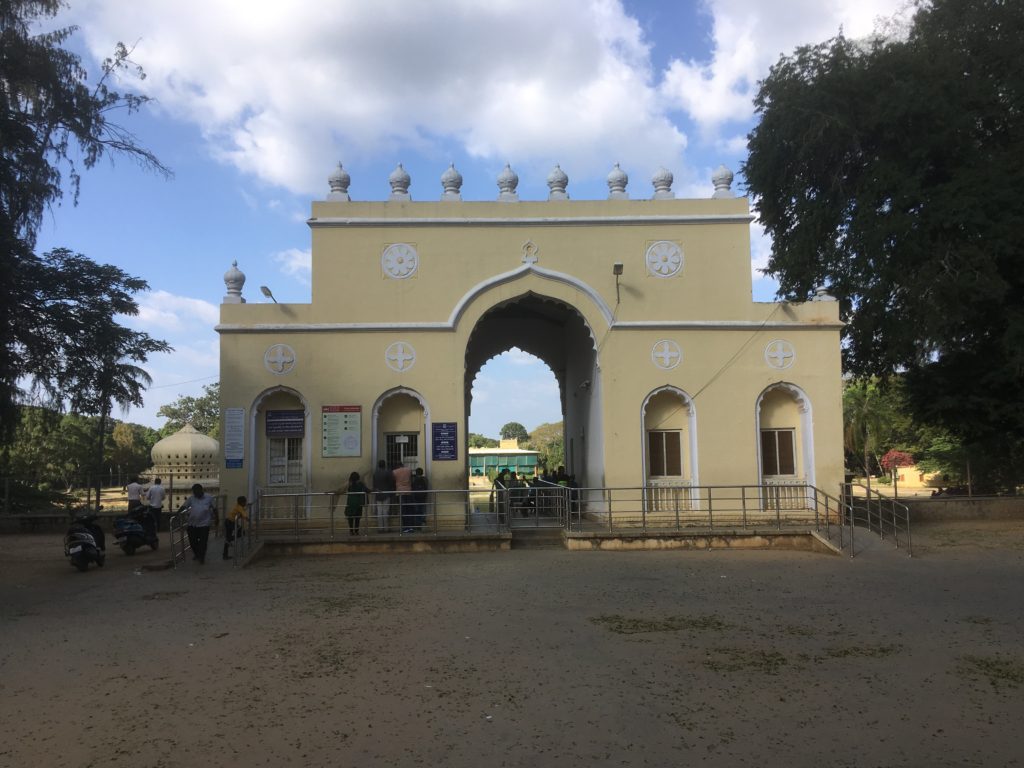
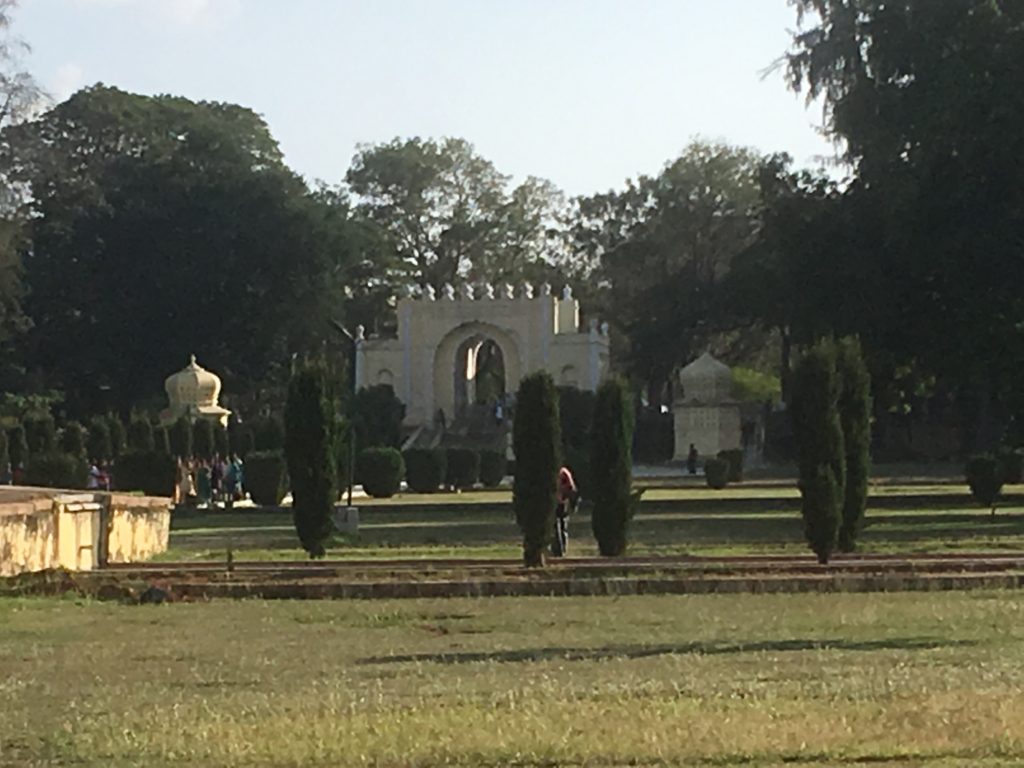
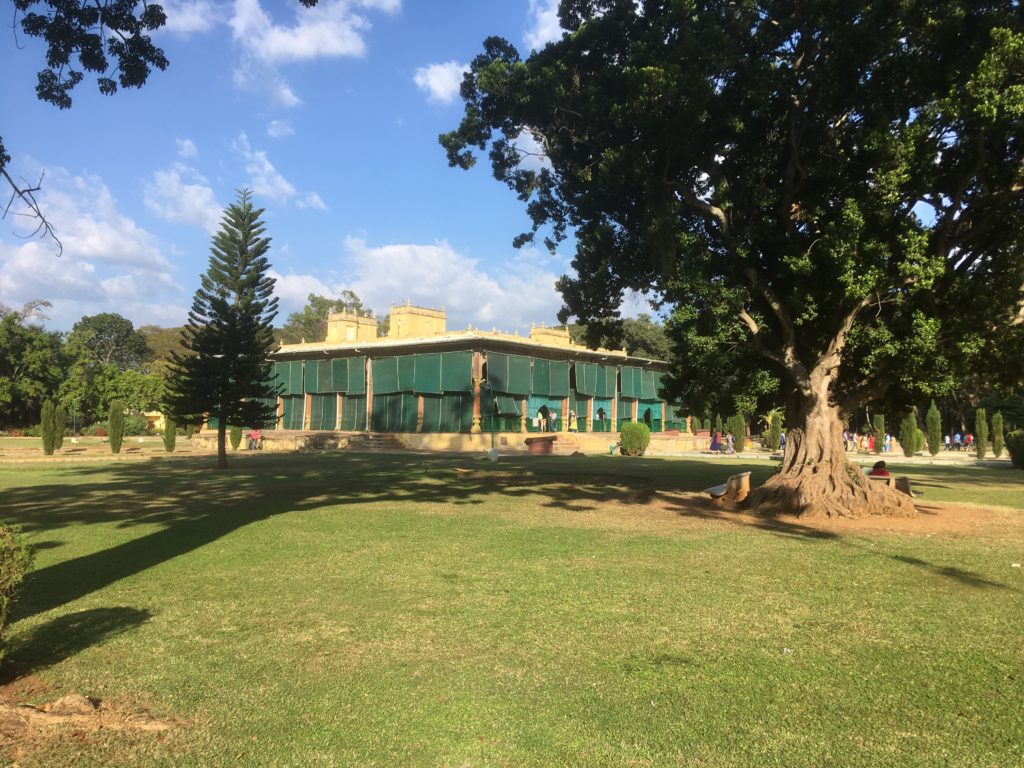

Nearby in a beautiful garden is the mausoleum of Haider Ali built by Tippu for his father, and both are buried there.
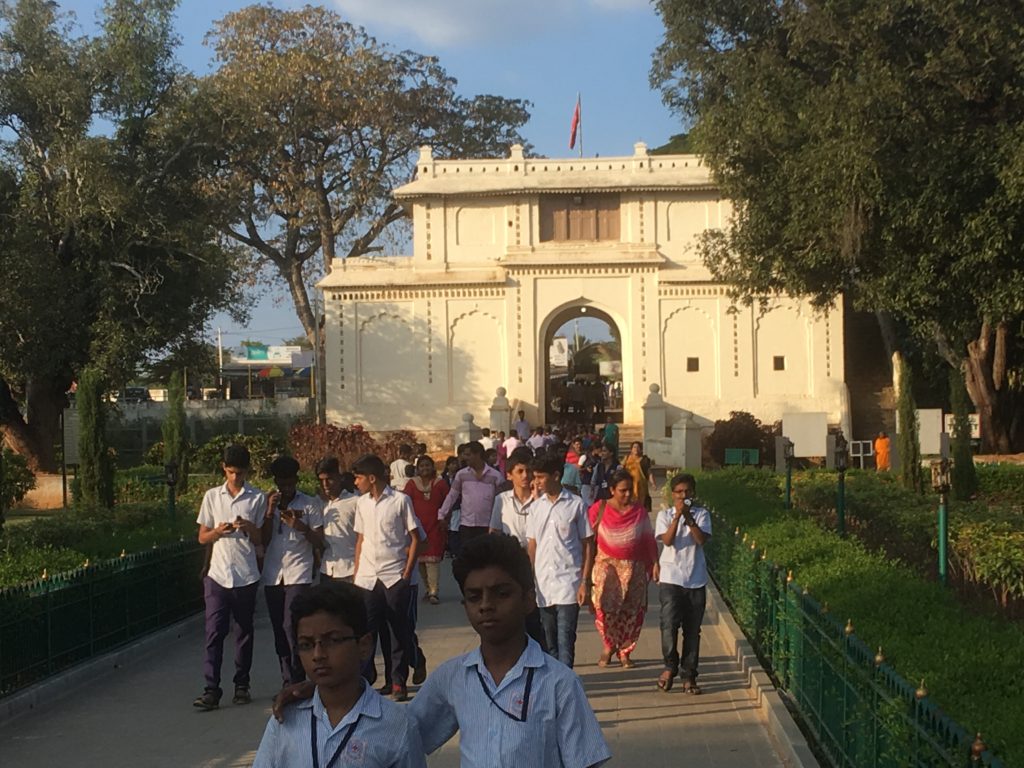
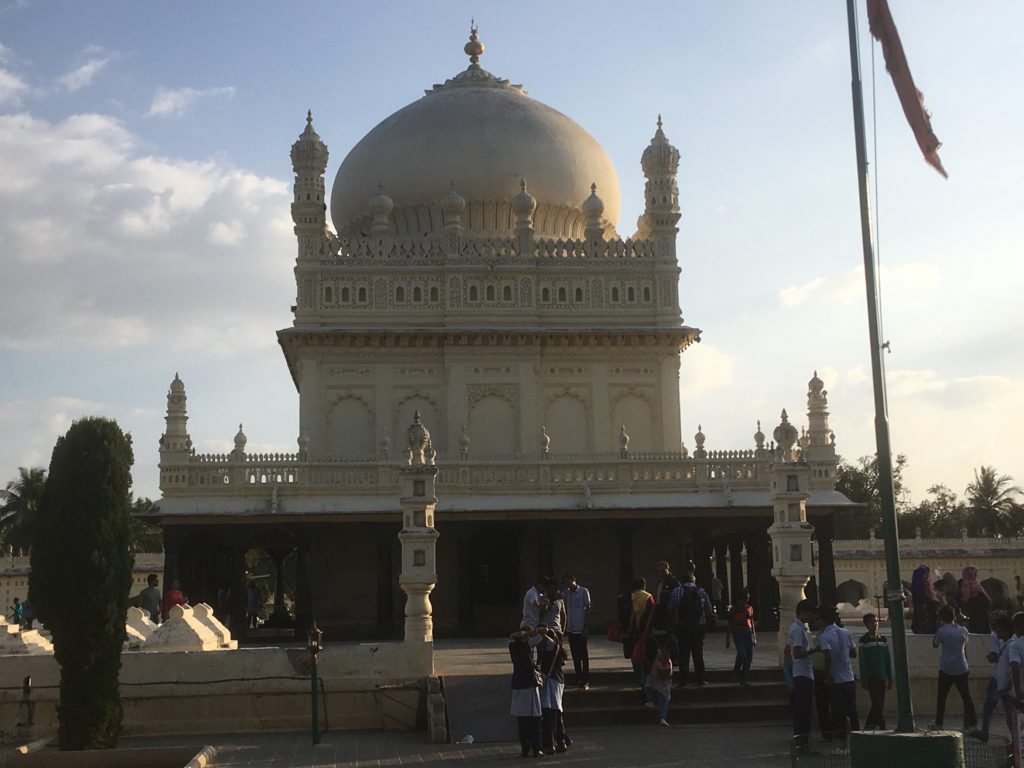
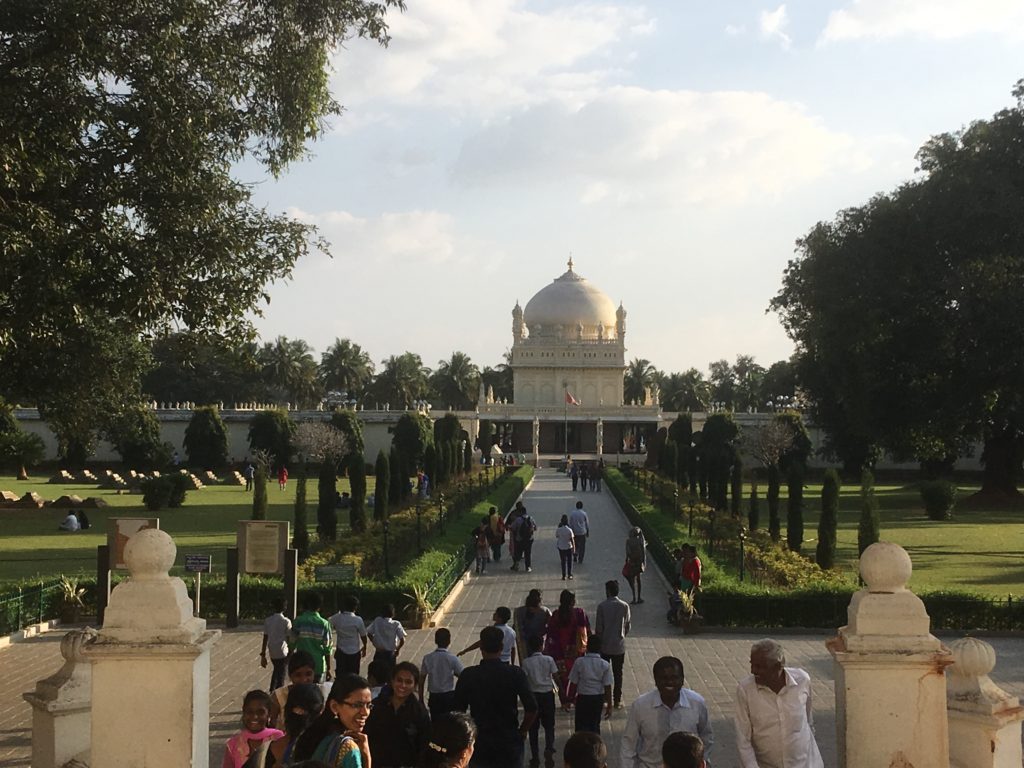
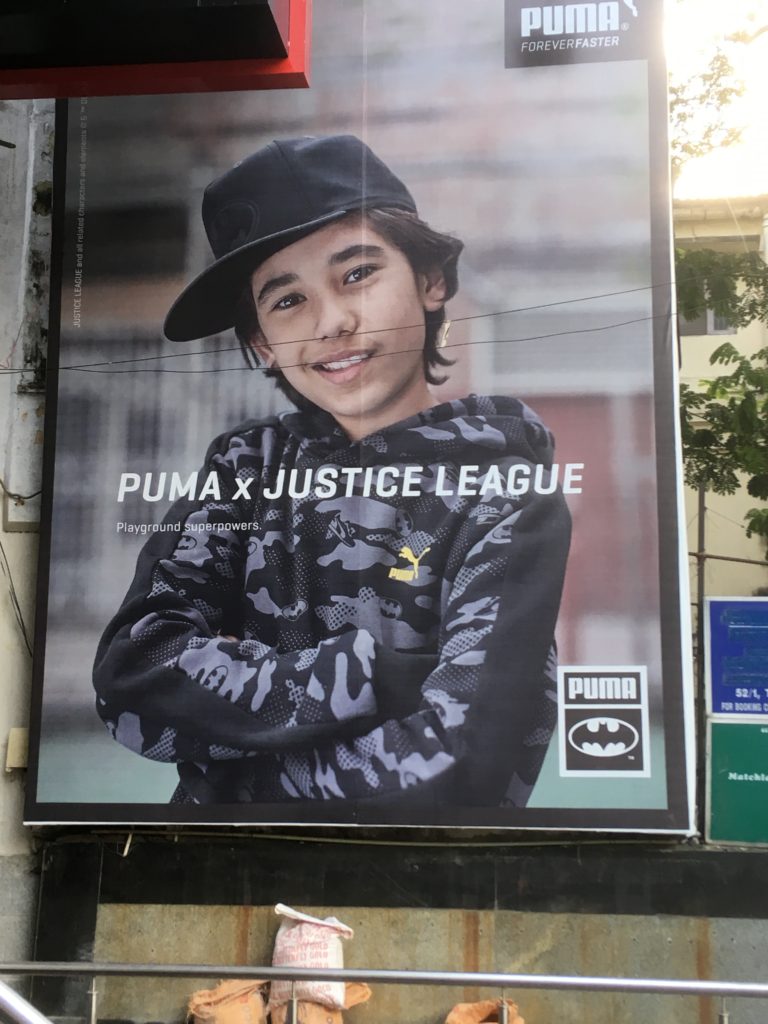
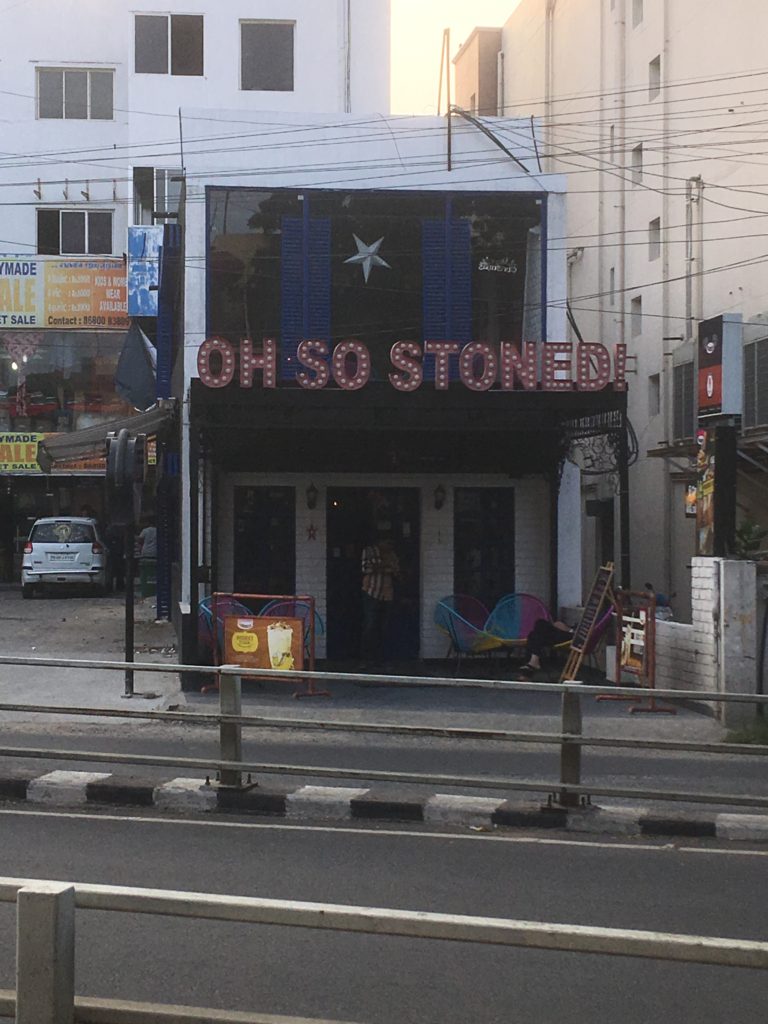
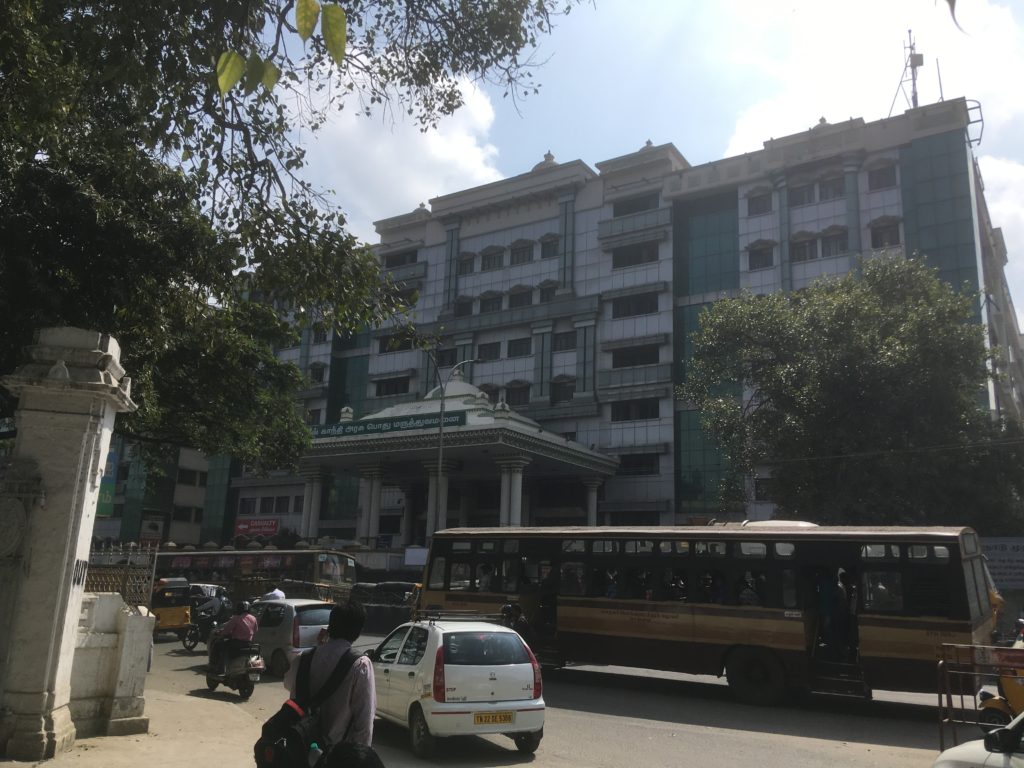
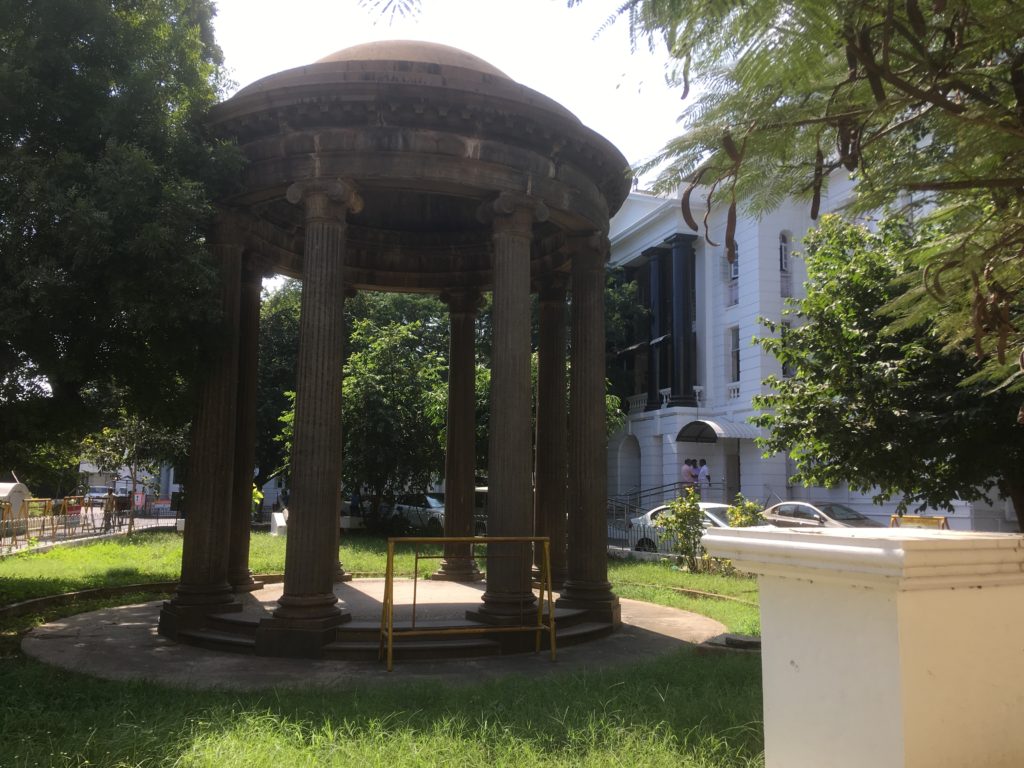
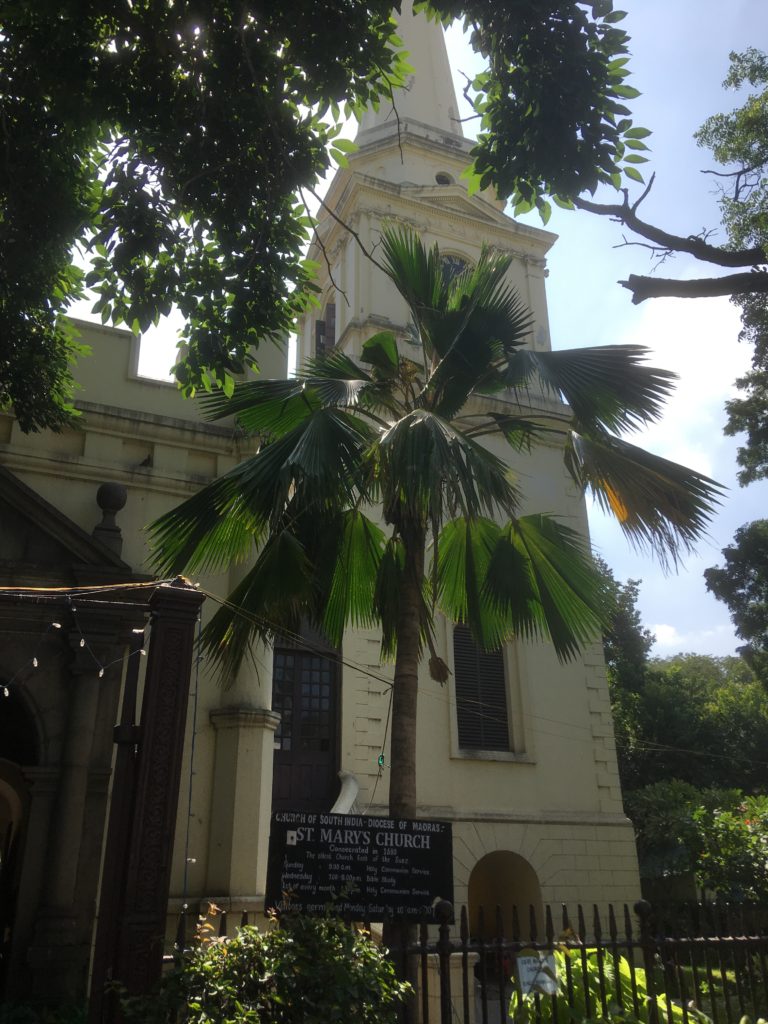
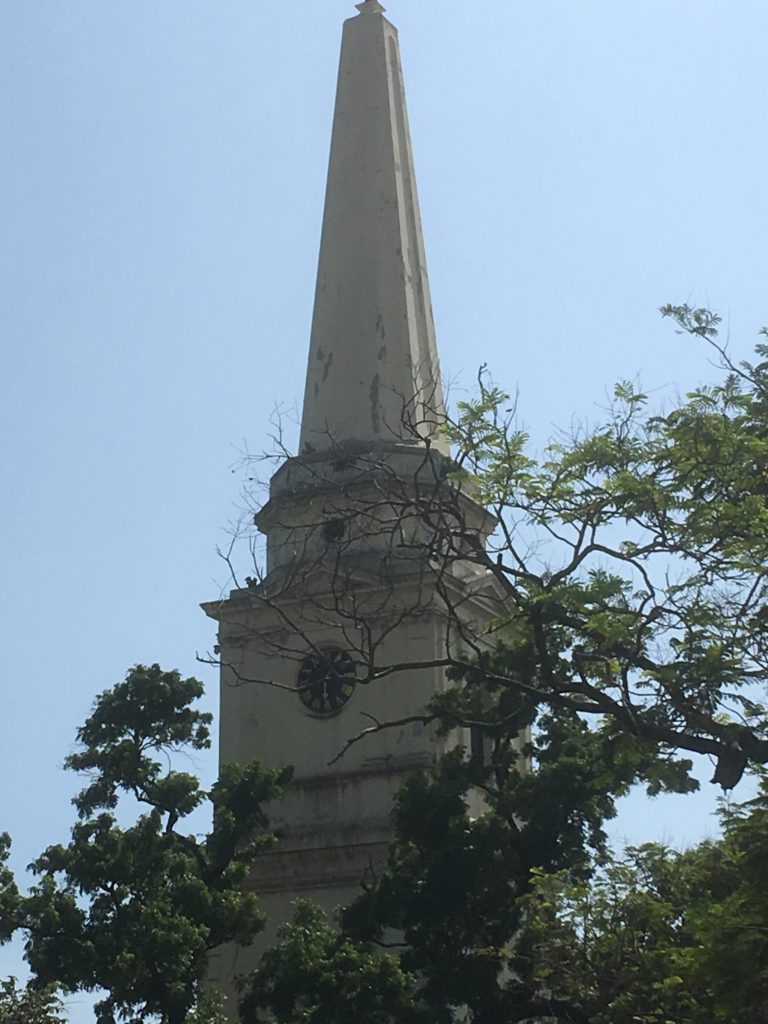
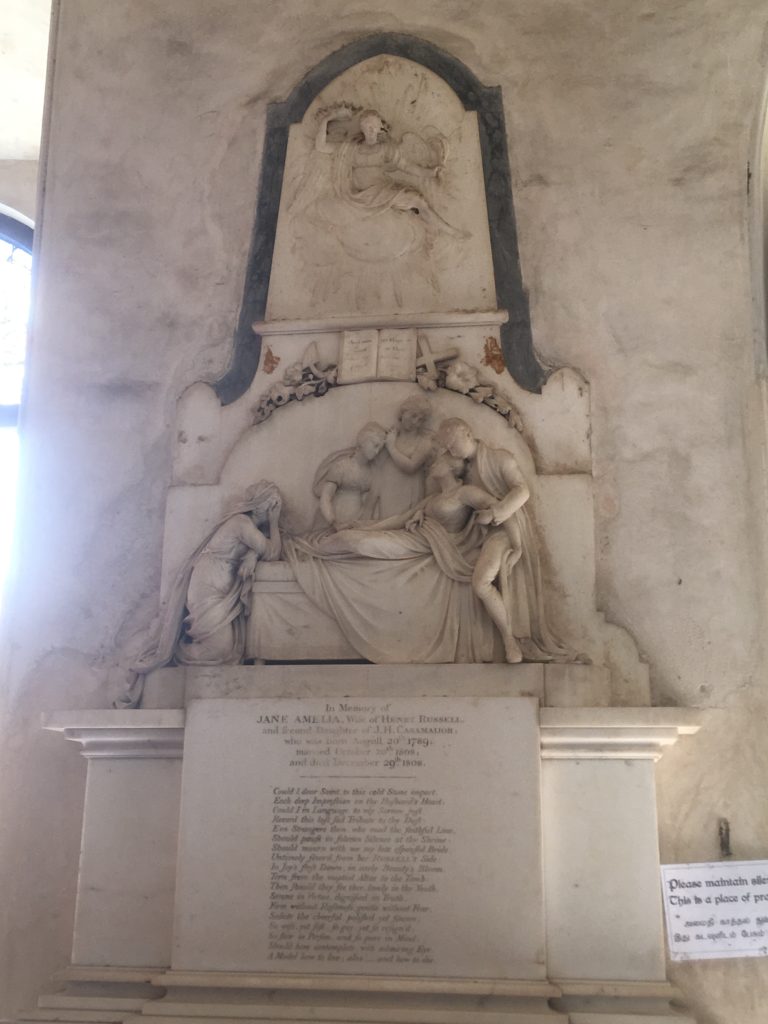
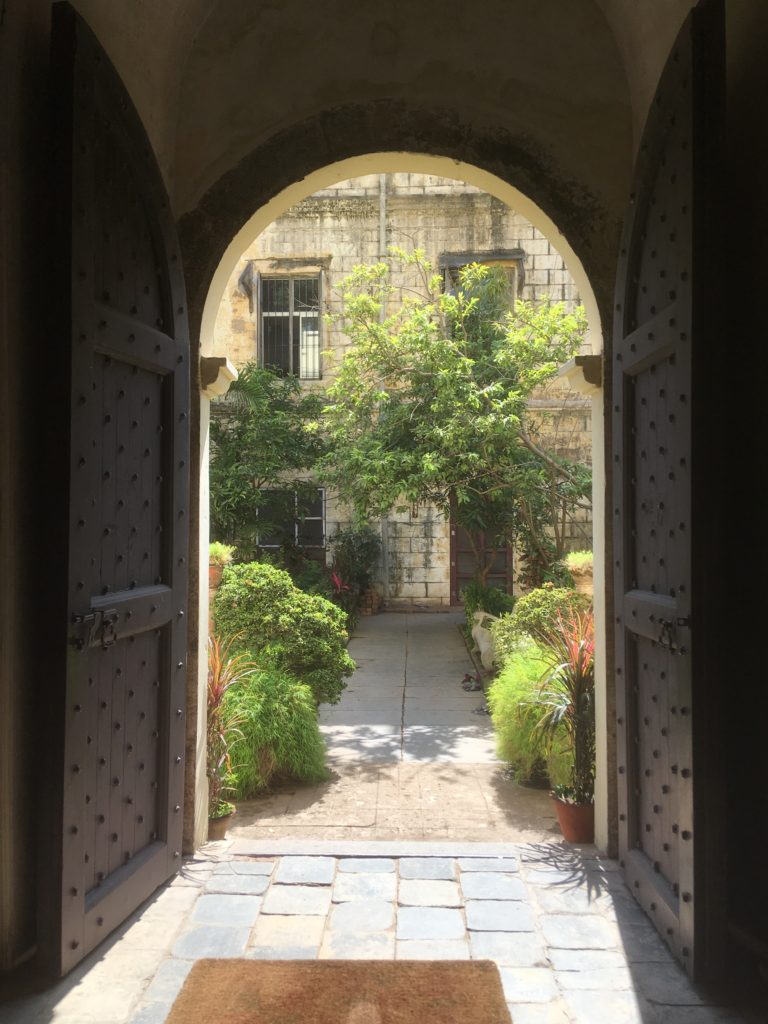

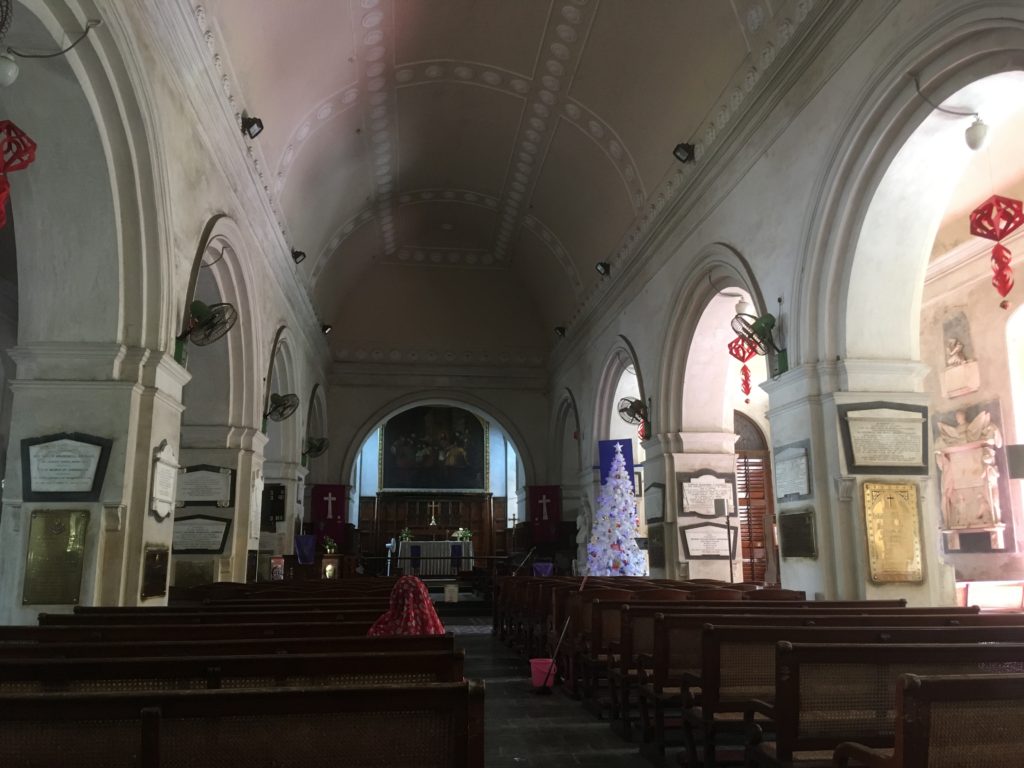
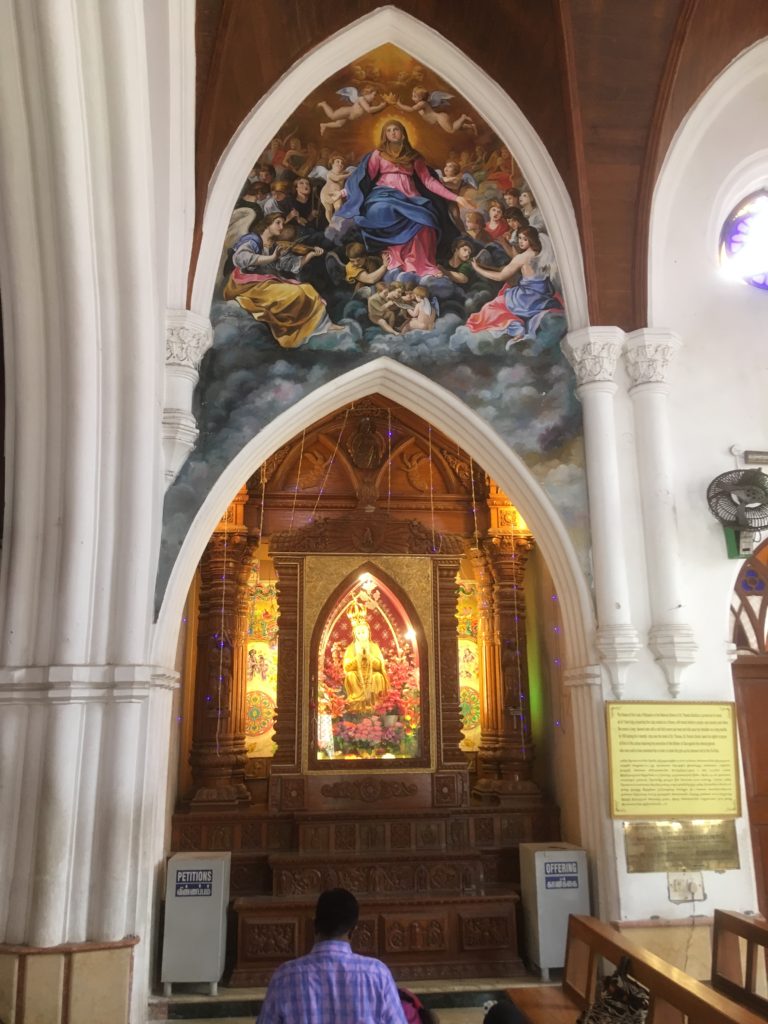 A kindly TukTuk driver guided us to an excellent Vegie Restaurant for a late meal. It is next door to the Indian Zoological Survey and was filled with well dressed professional men and women from this instituition. The food was simple but very good. We have established that there is no such dish as Madras Curry on any of the menus that we have seen and wonder whether it is like ‘spaghetti bolognese’ a dish that only foreigners know of and eat.
A kindly TukTuk driver guided us to an excellent Vegie Restaurant for a late meal. It is next door to the Indian Zoological Survey and was filled with well dressed professional men and women from this instituition. The food was simple but very good. We have established that there is no such dish as Madras Curry on any of the menus that we have seen and wonder whether it is like ‘spaghetti bolognese’ a dish that only foreigners know of and eat.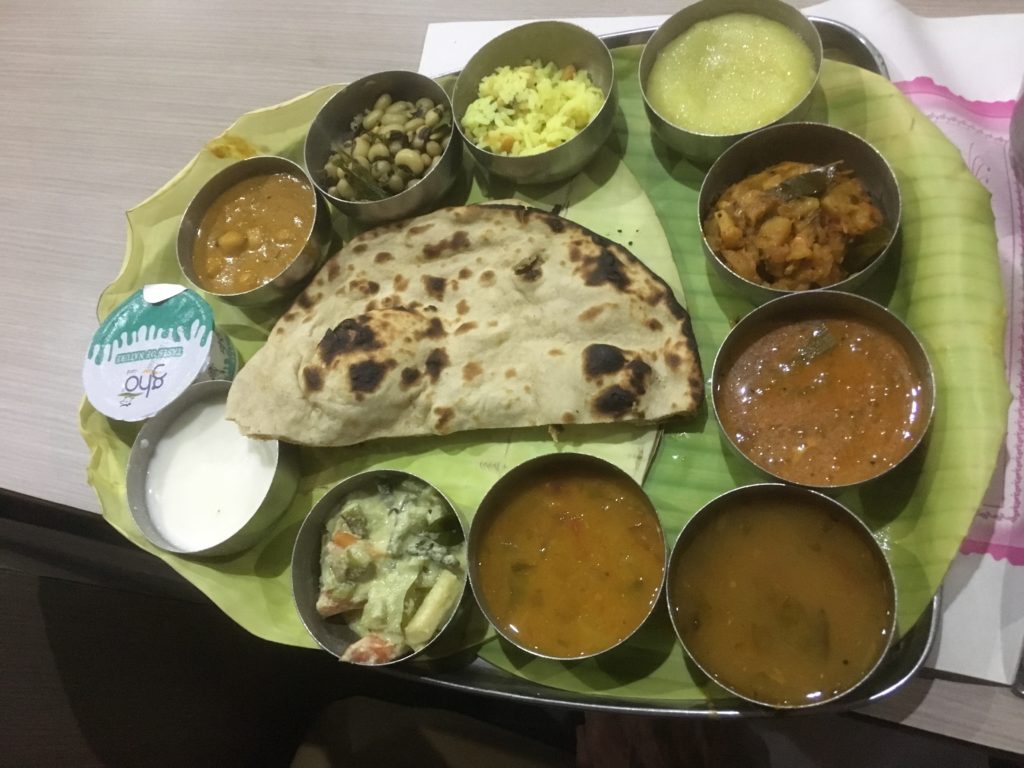
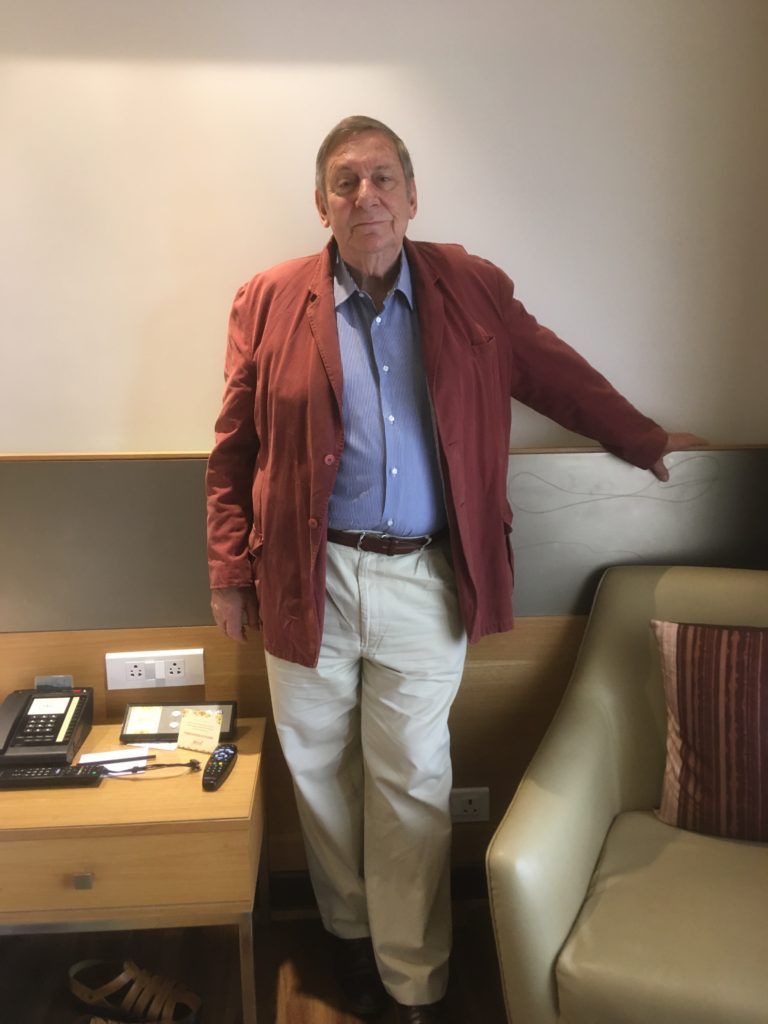
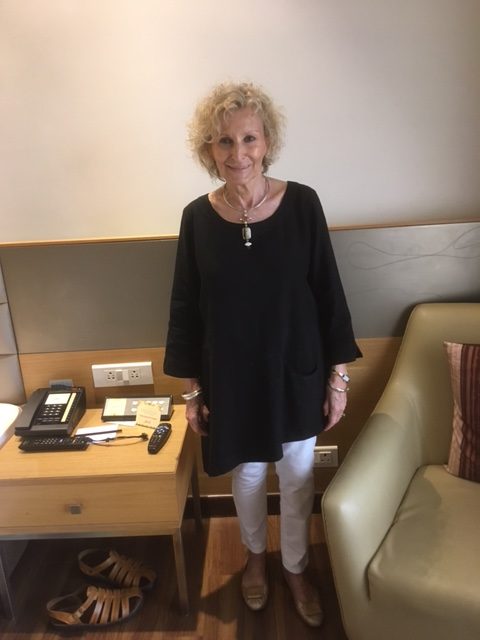
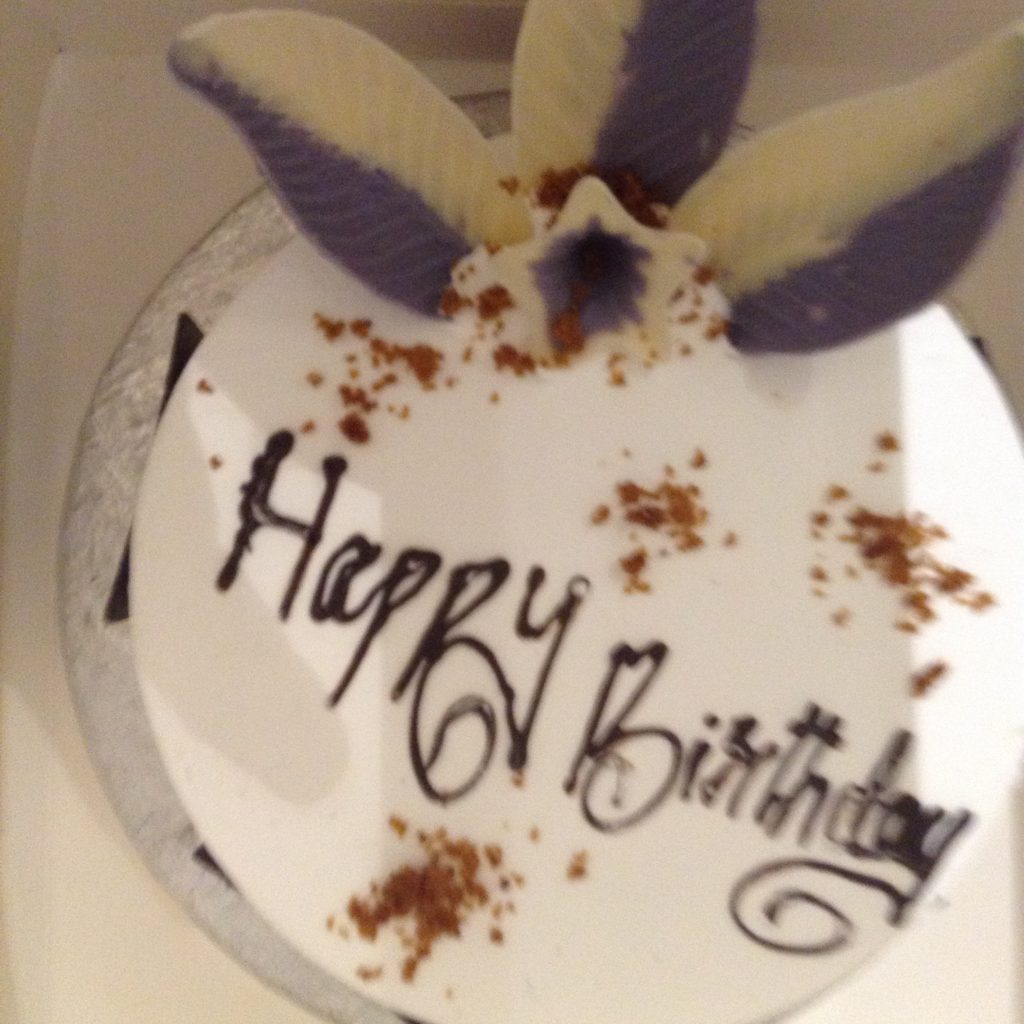
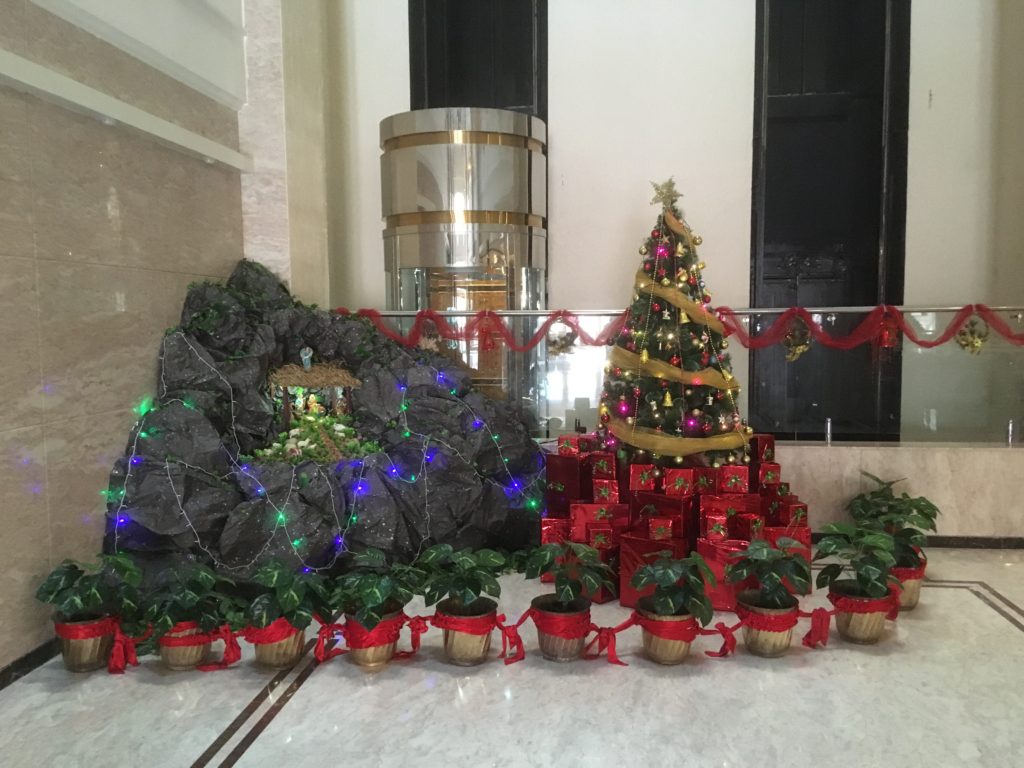
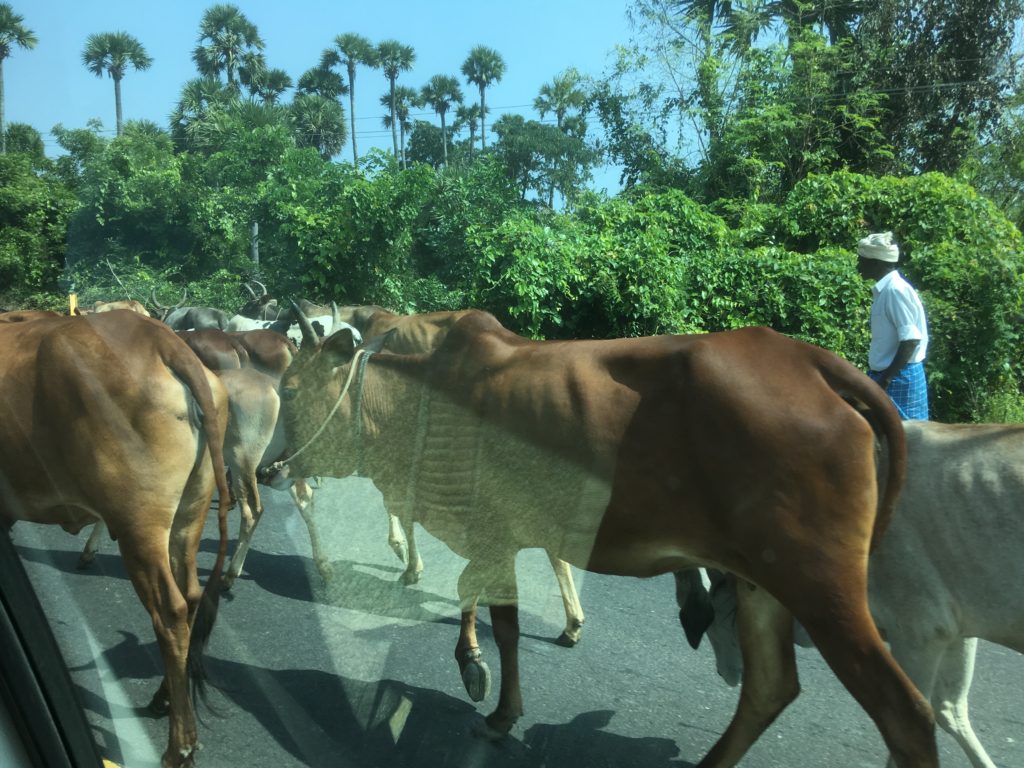
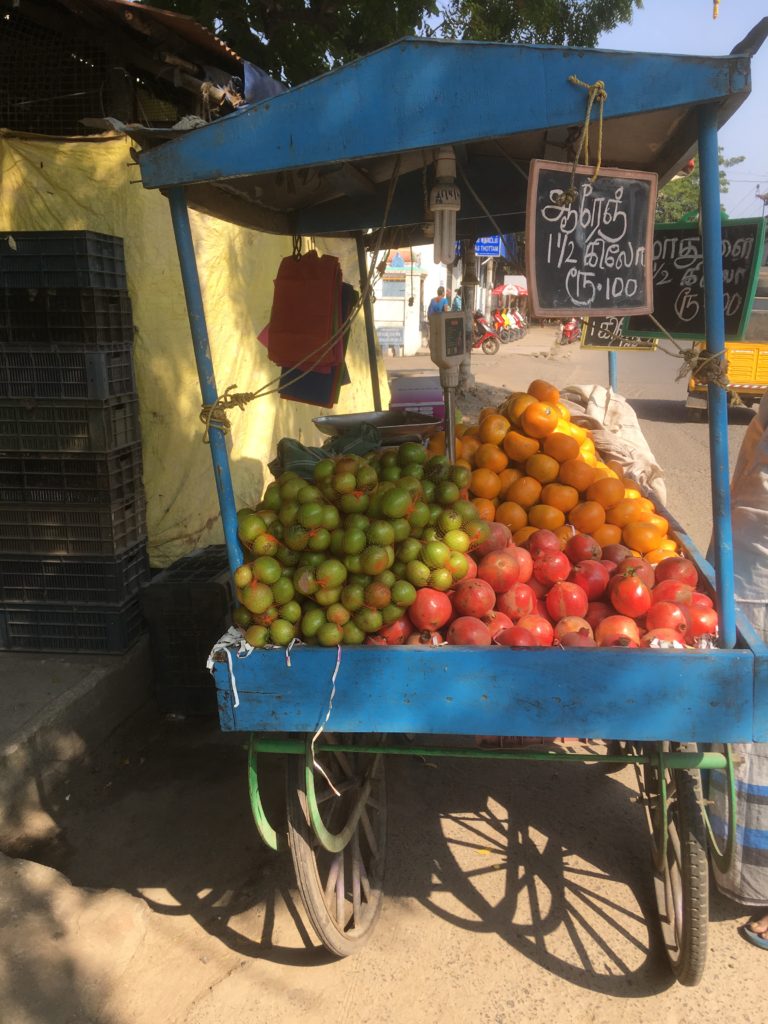
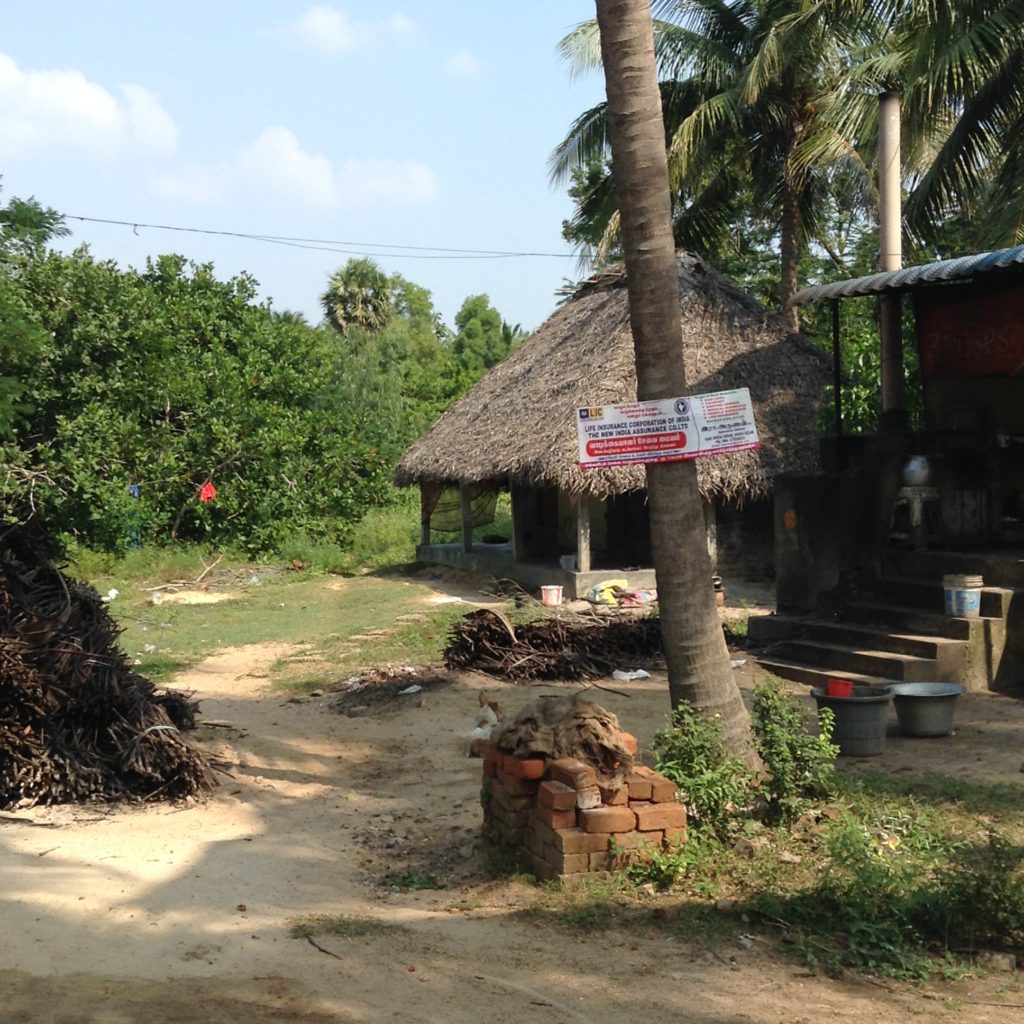
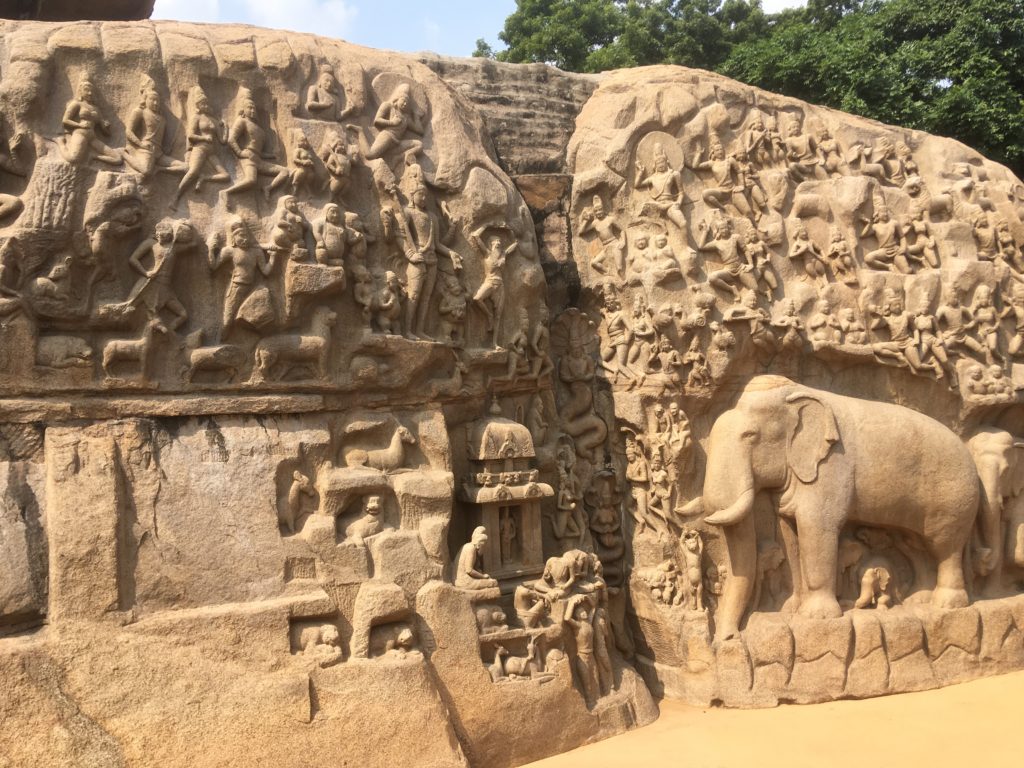
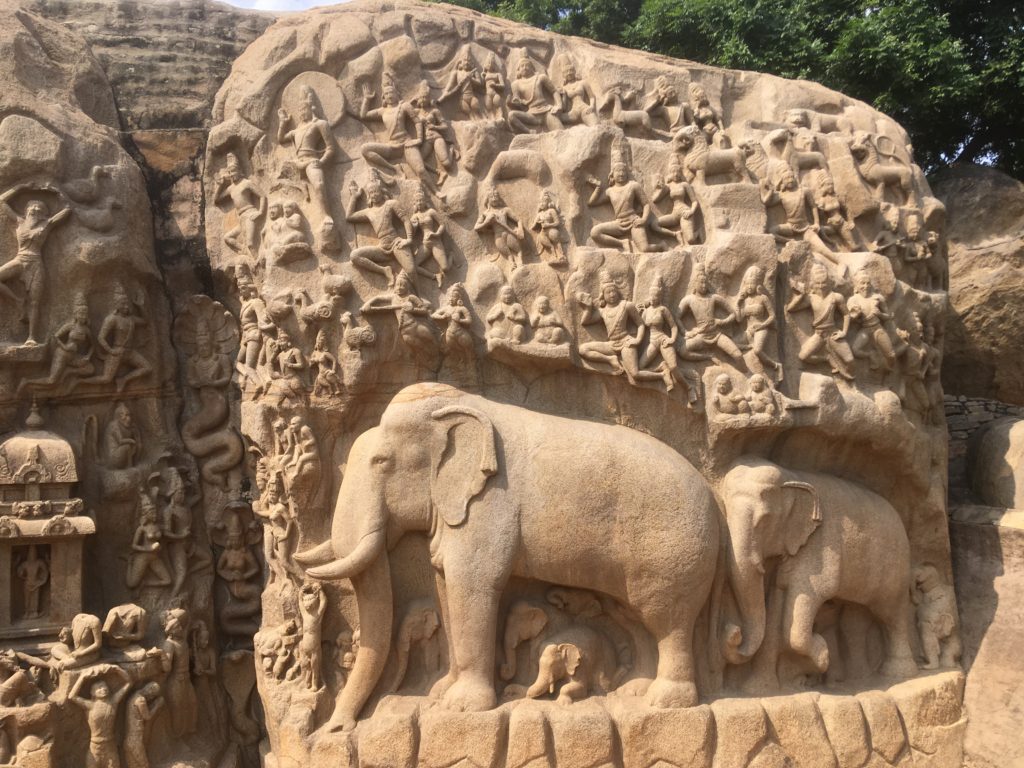
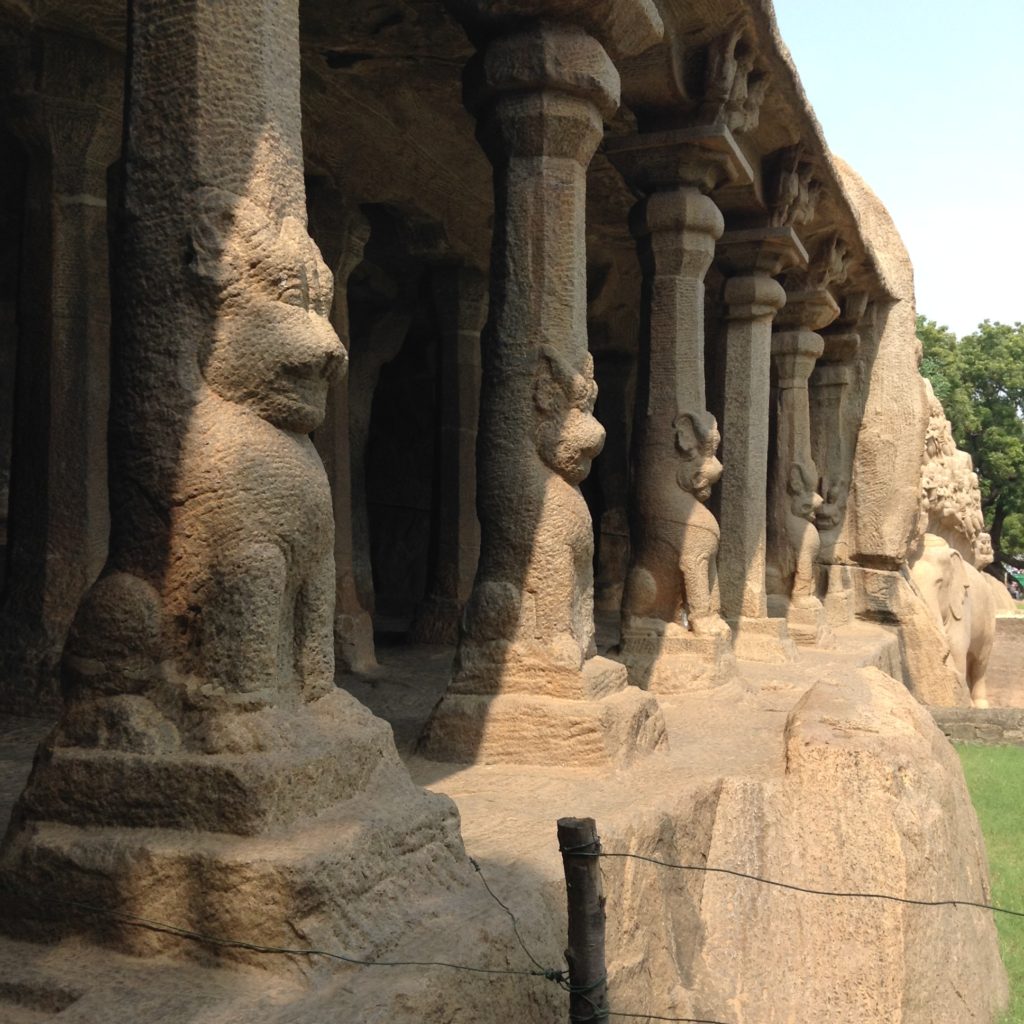
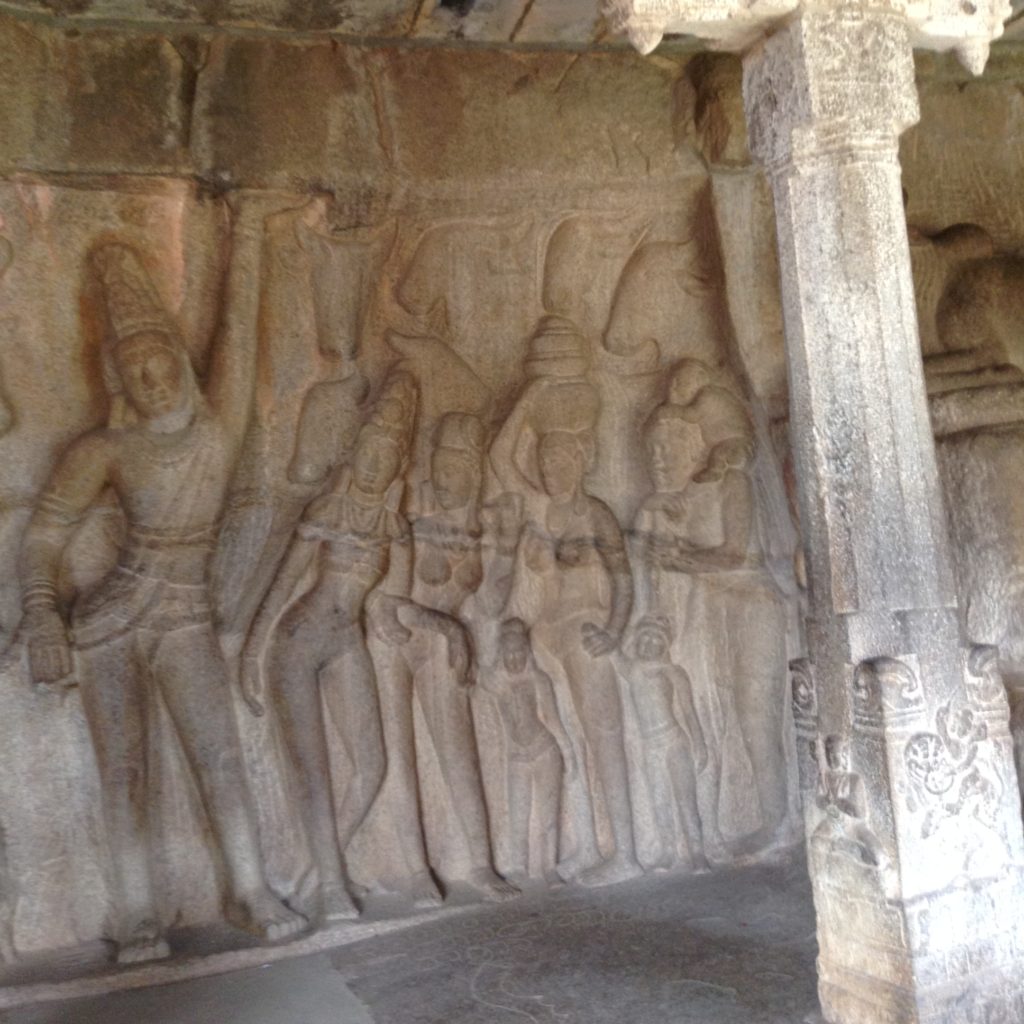

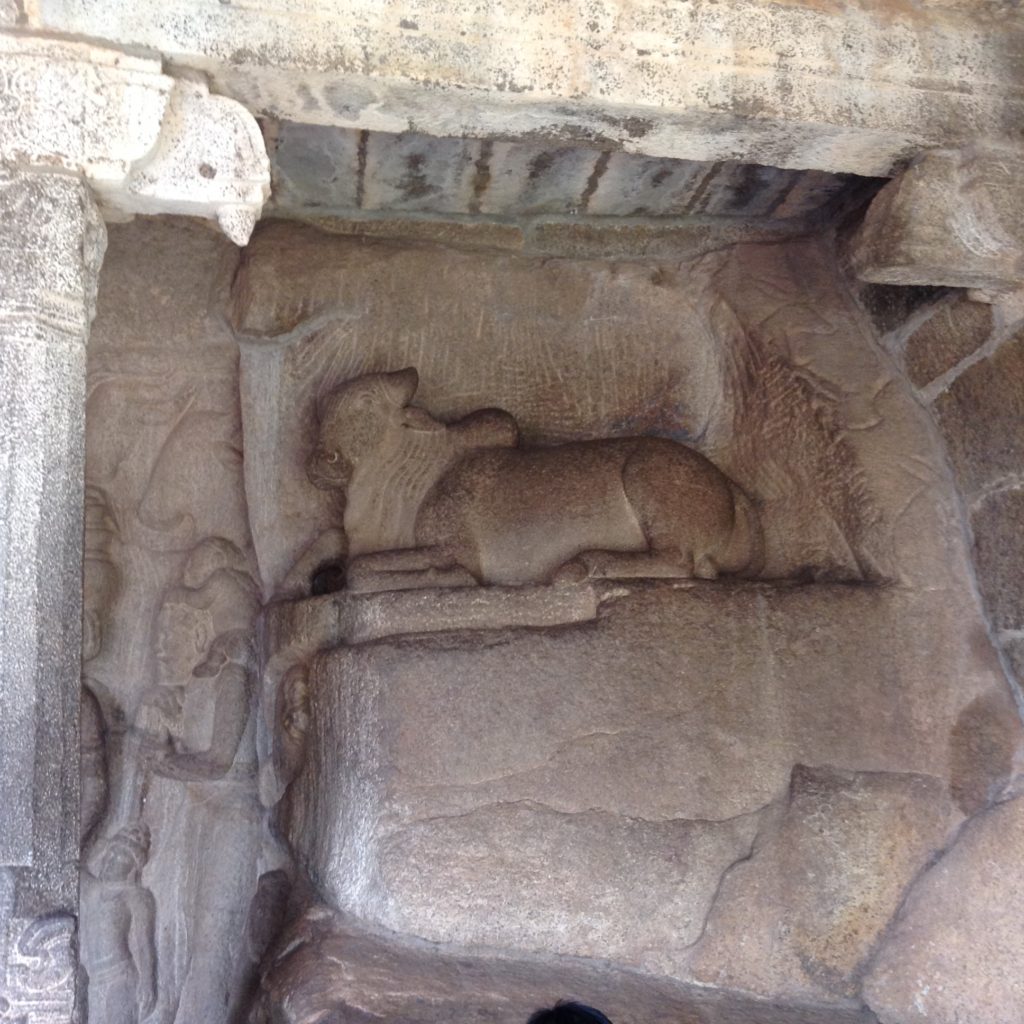
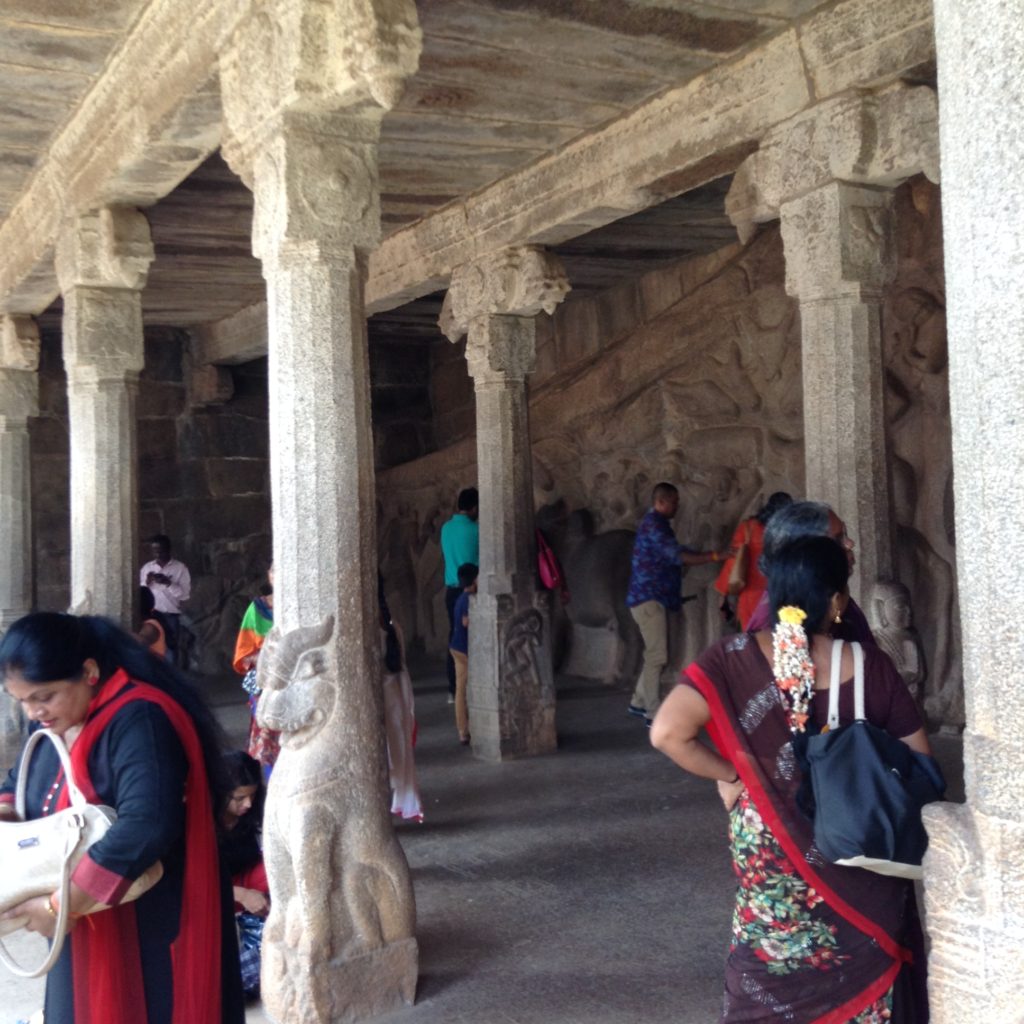
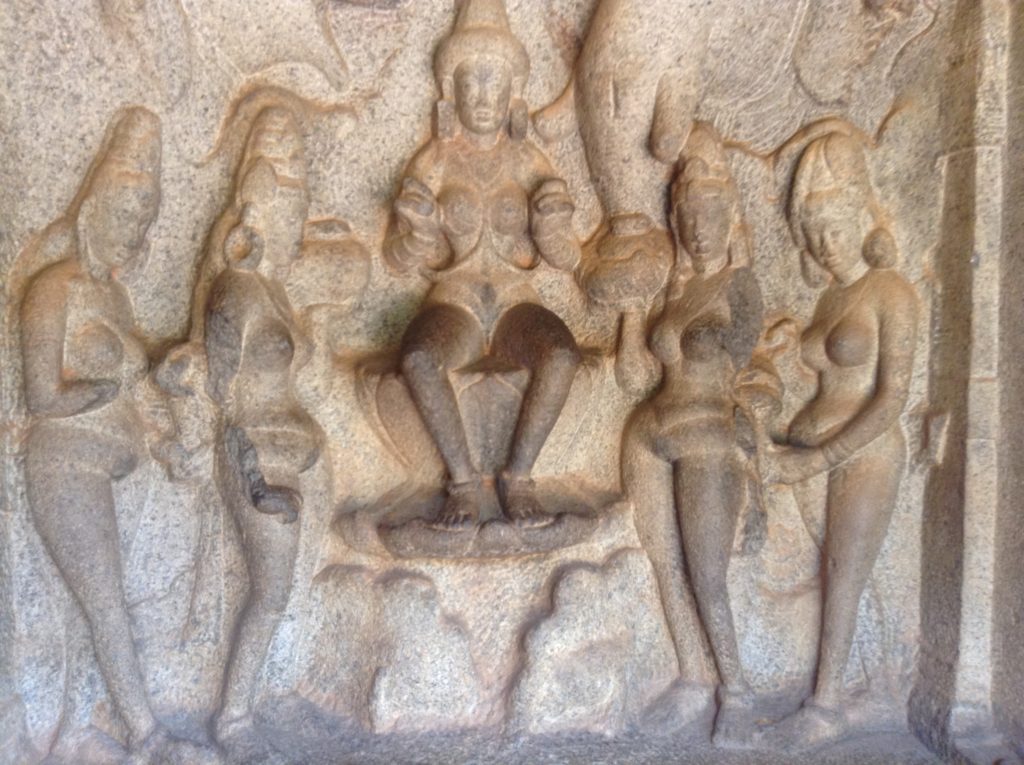
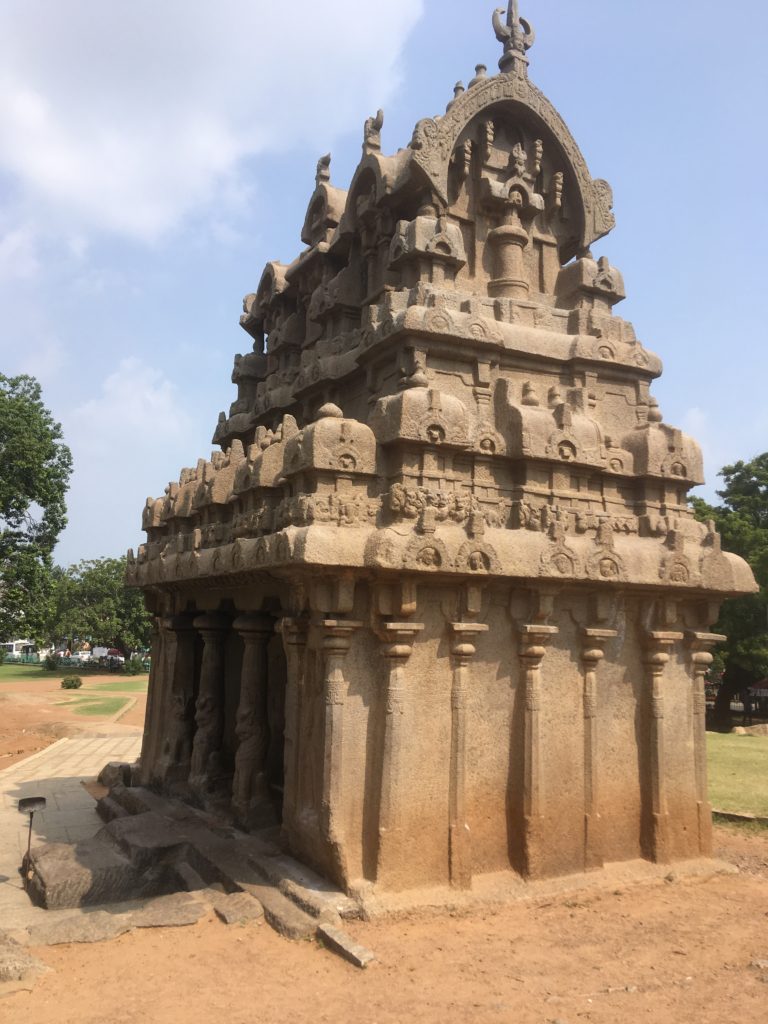

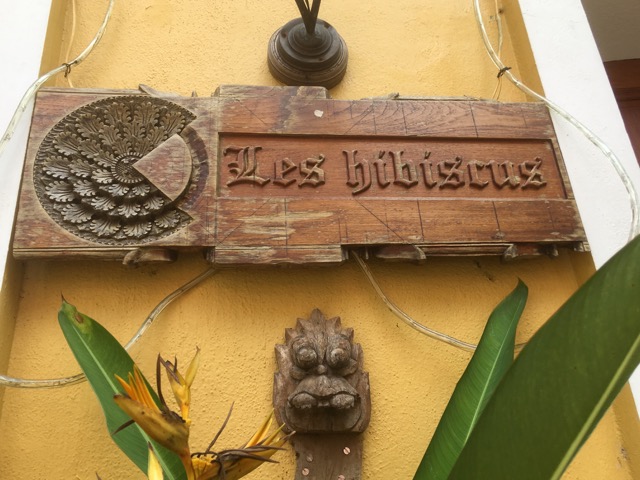

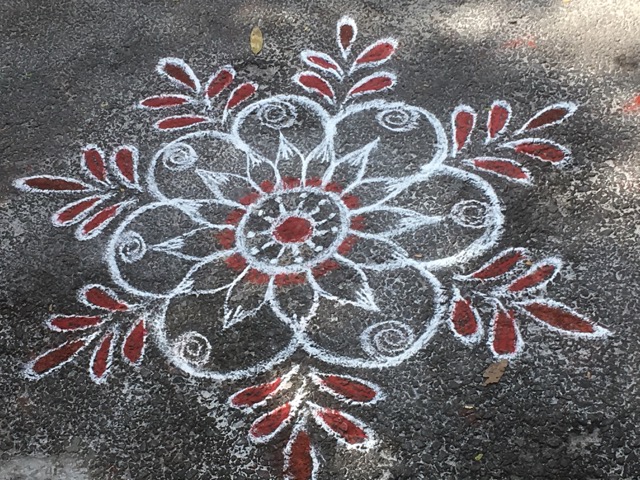
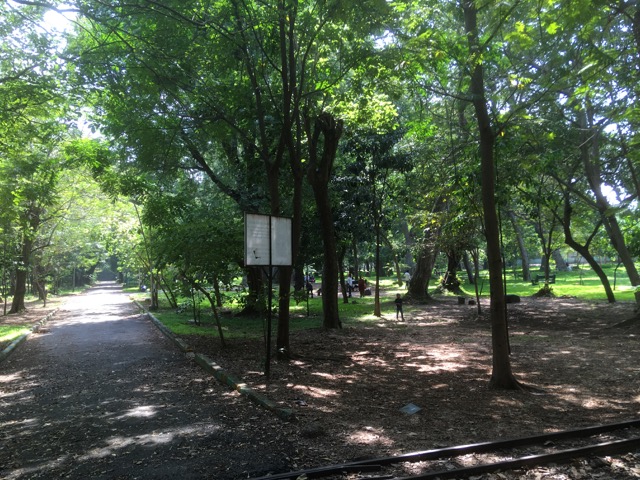
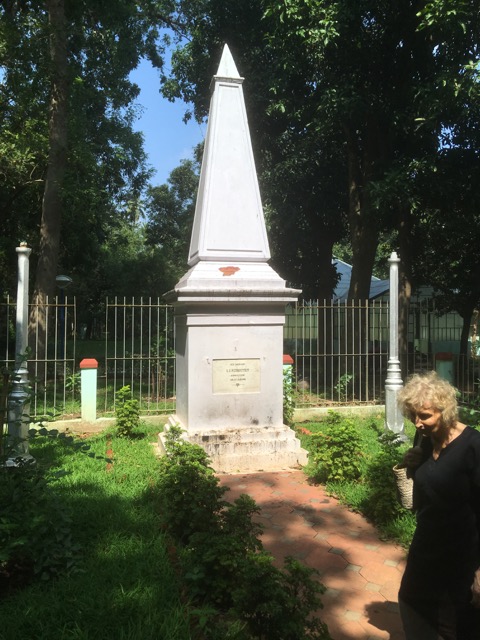 Then it was off to the Botanical Garden which must once have been very beautiful but has now been somewhat neglected. It was established by the French in 1826 under the direction of the botanist George Perottet who is buried in the garden. The purpose of the garden was scientific and practical, to study the performance and adaptability of various plants to local conditions. By 1829 the collection, enriched with new and rare plants had grown to about nine hundred species. There are still many rare trees standing, including a mahogany imported from Africa soon after the garden opened.
Then it was off to the Botanical Garden which must once have been very beautiful but has now been somewhat neglected. It was established by the French in 1826 under the direction of the botanist George Perottet who is buried in the garden. The purpose of the garden was scientific and practical, to study the performance and adaptability of various plants to local conditions. By 1829 the collection, enriched with new and rare plants had grown to about nine hundred species. There are still many rare trees standing, including a mahogany imported from Africa soon after the garden opened.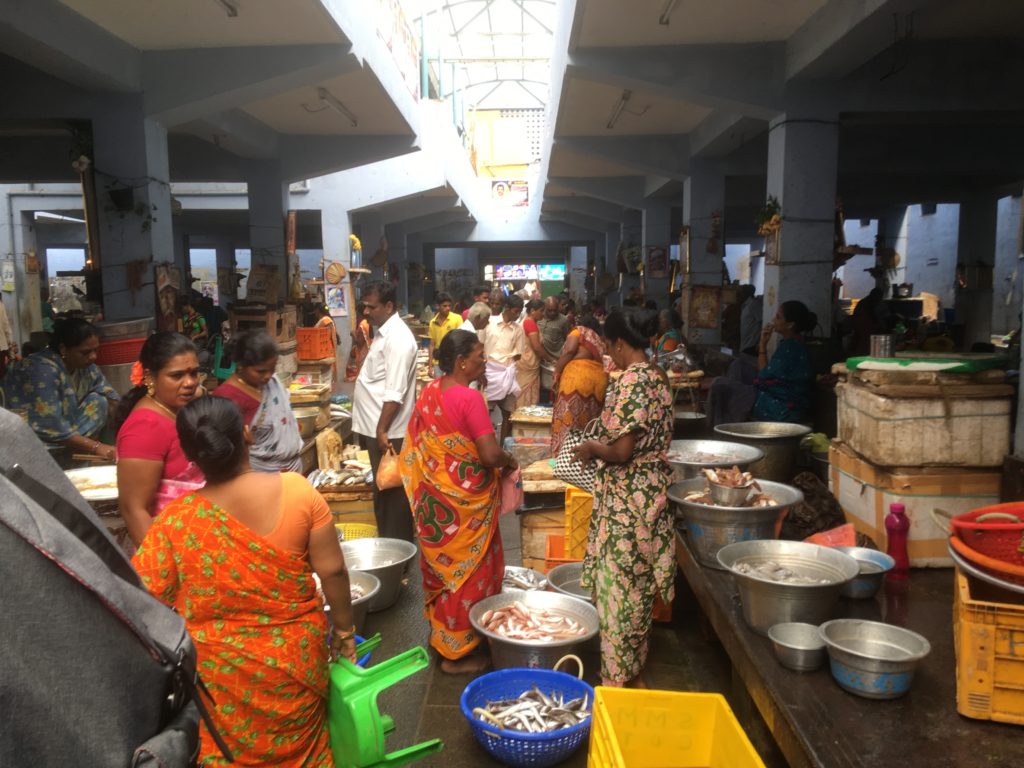 They set off to the fish and vegetable markets in tuk tuks, the only way really to get around the shopping streets here without risking injury or worse. Several small bony fish called ‘sea carp’ which Nick describes as baby sea bream were bought. After the fish had been gutted and lentils and vegetables purchased, they returned to the kitchen to chop, pound, scrape, sautee and boil all these ingredients.
They set off to the fish and vegetable markets in tuk tuks, the only way really to get around the shopping streets here without risking injury or worse. Several small bony fish called ‘sea carp’ which Nick describes as baby sea bream were bought. After the fish had been gutted and lentils and vegetables purchased, they returned to the kitchen to chop, pound, scrape, sautee and boil all these ingredients.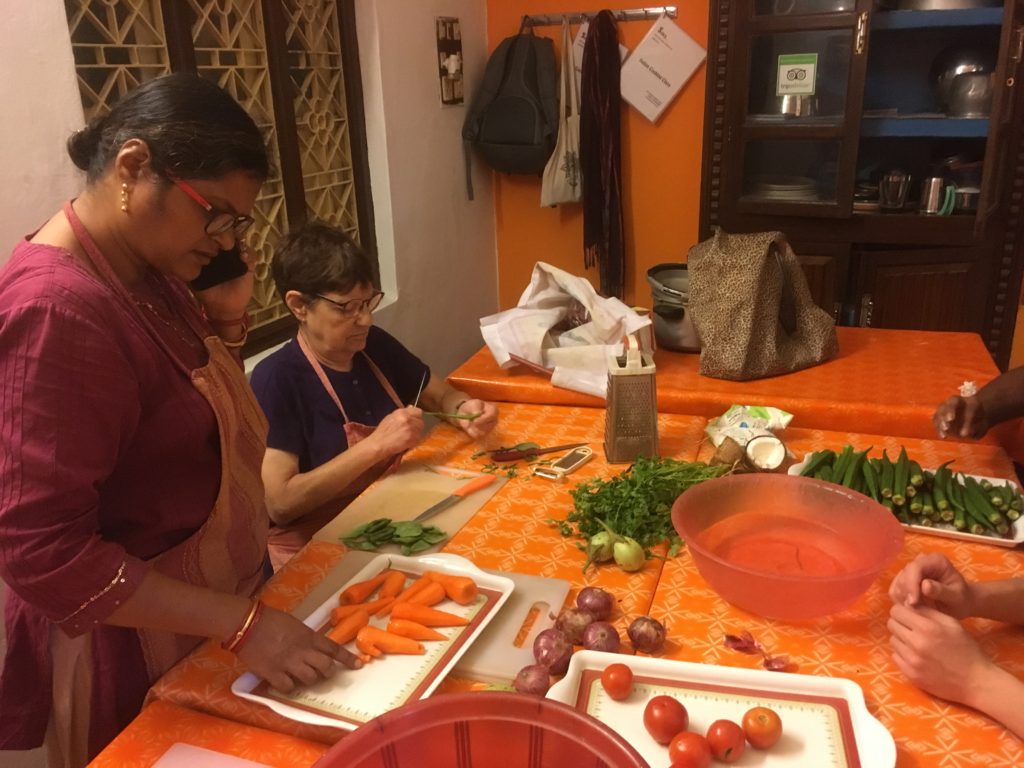
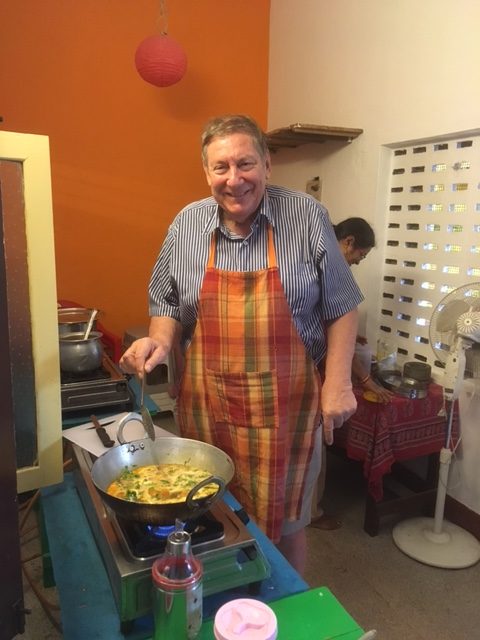

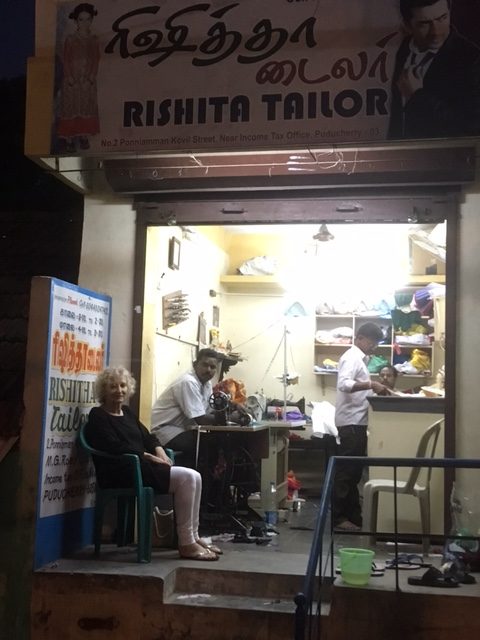


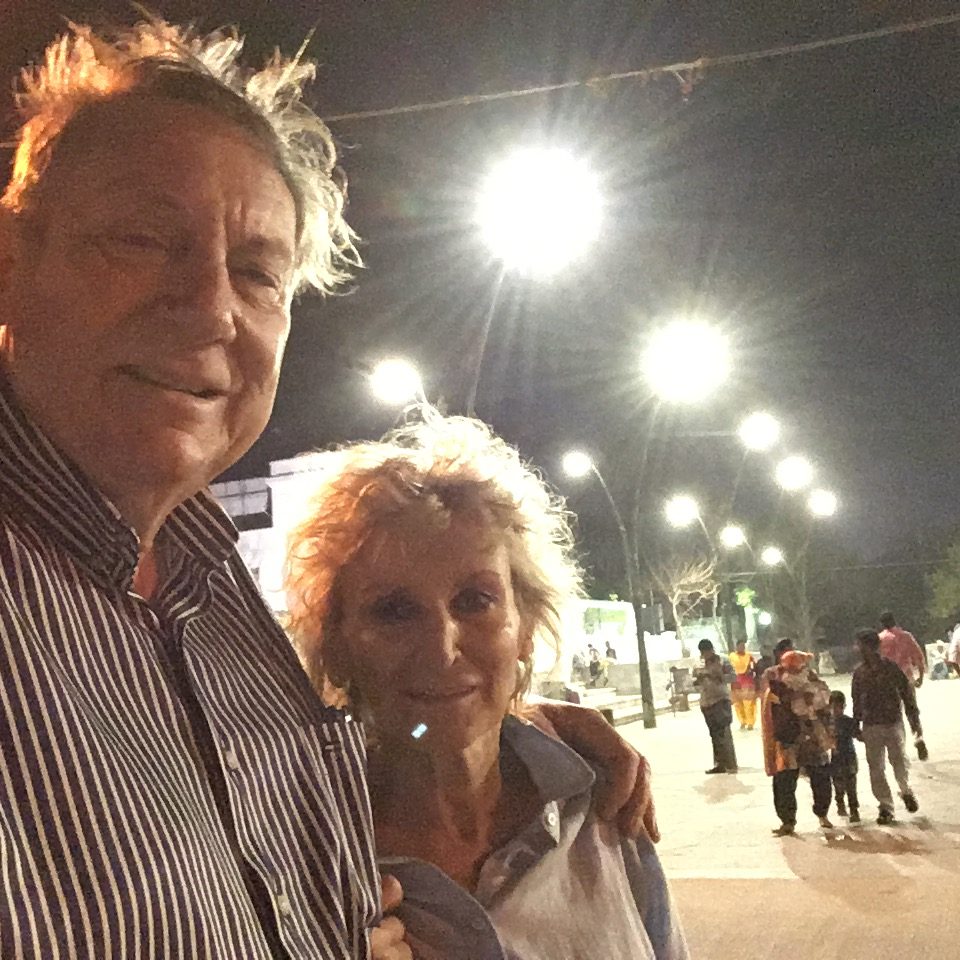
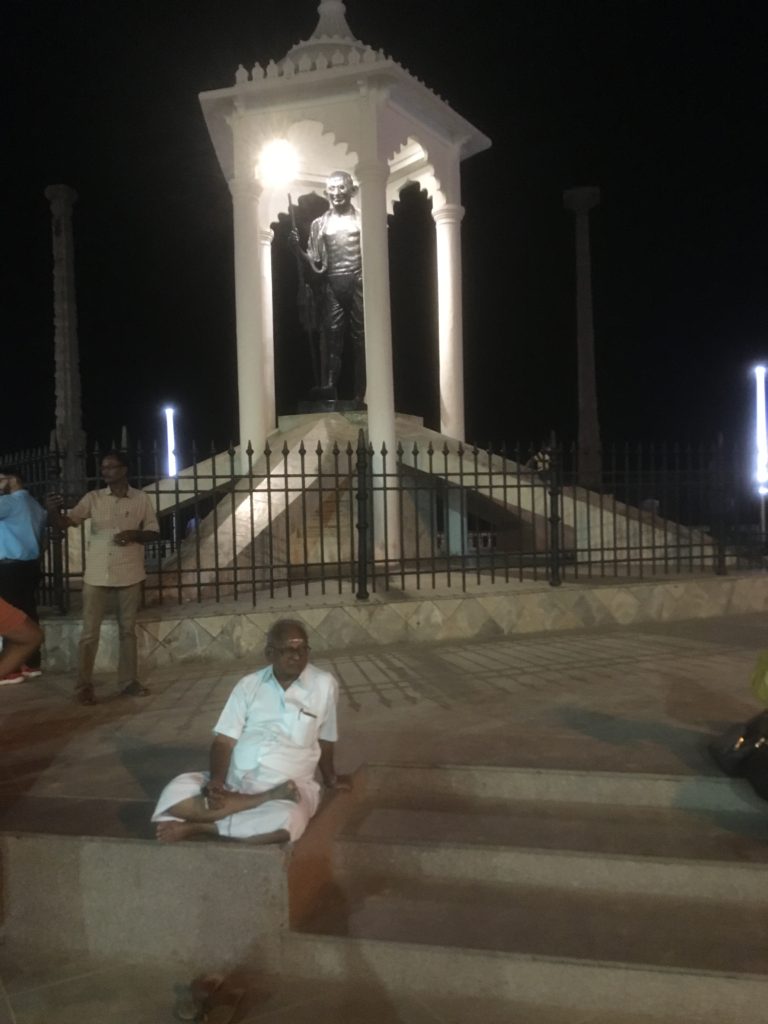

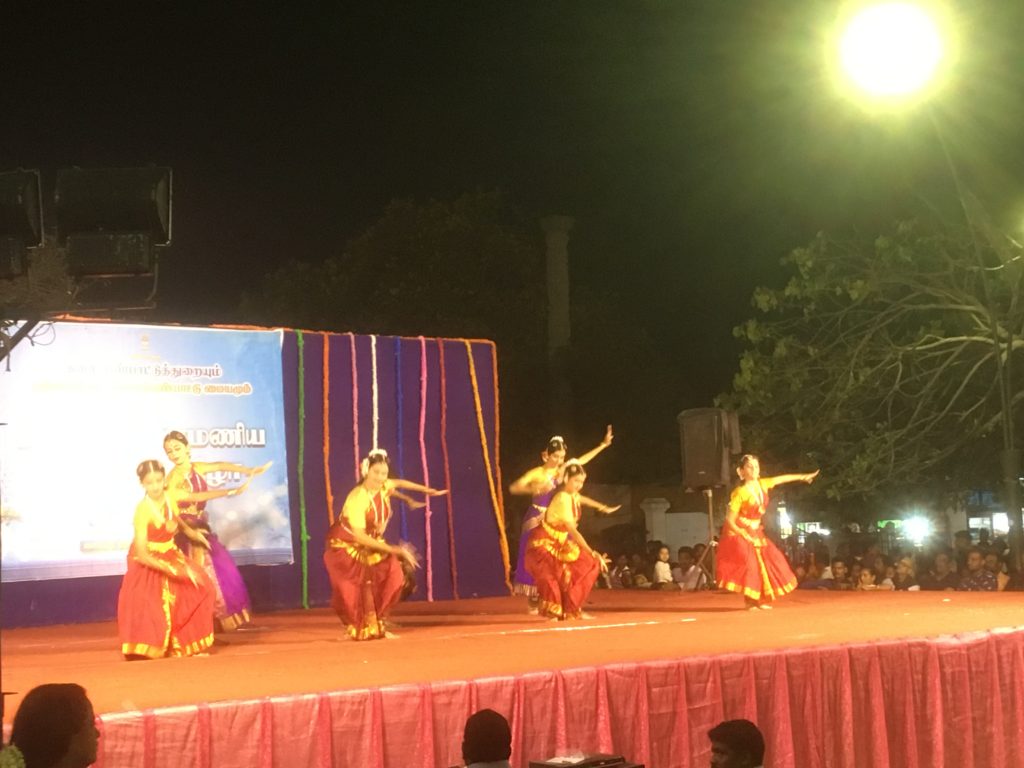

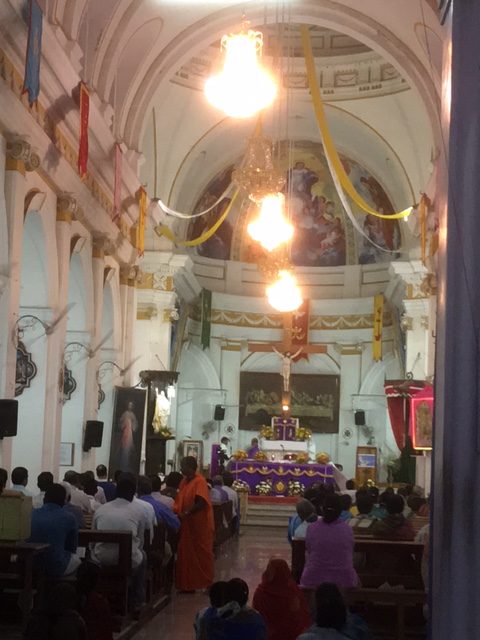
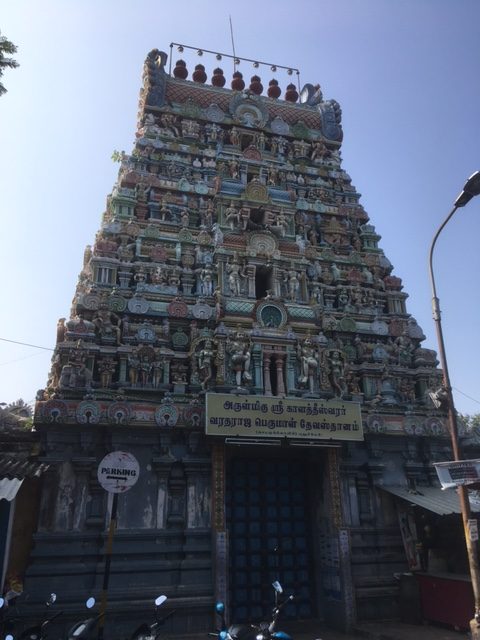
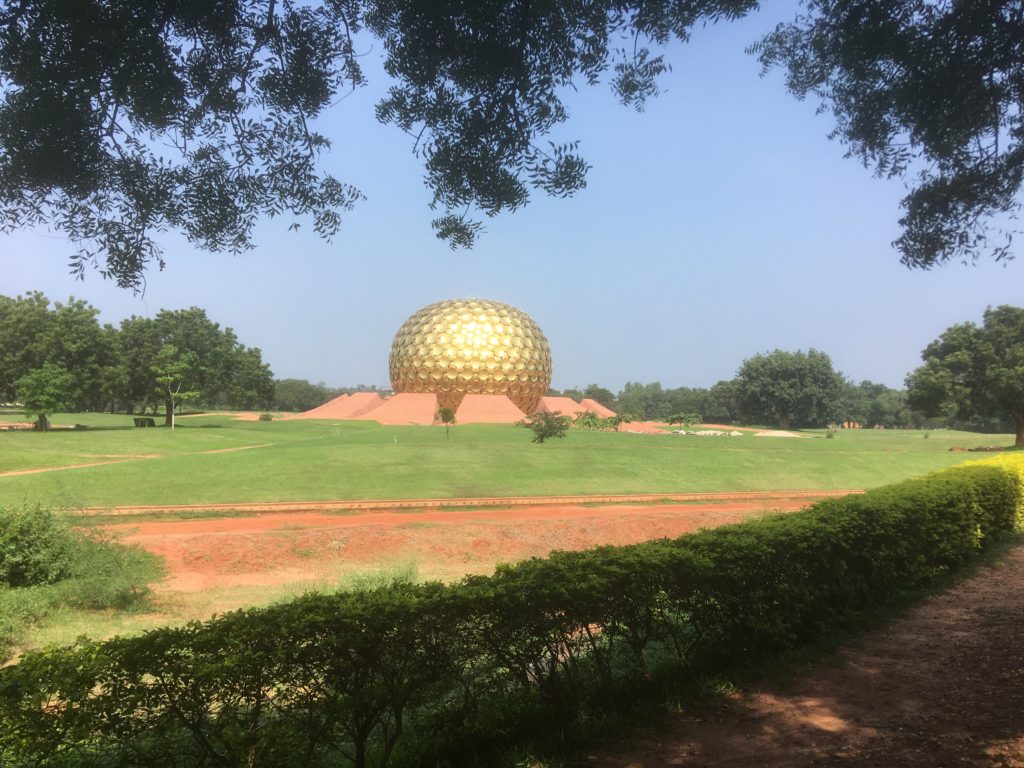 No particular religion is followed but the inhabitants live a truly holistic, eco-friendly life, making beautiful objects (textiles and other useful items) from recycled everything – rubber, paper, plastic, rags and so on. They have built it all themselves and planted beautiful gardens and woods. Many of them are French, though there is a fair sprinkling of Aussies and a few Americans on the hippy trail. At the centre of it all is the Matrimandir, a golden dome lined with glass and marble where they congregate to meditate.
No particular religion is followed but the inhabitants live a truly holistic, eco-friendly life, making beautiful objects (textiles and other useful items) from recycled everything – rubber, paper, plastic, rags and so on. They have built it all themselves and planted beautiful gardens and woods. Many of them are French, though there is a fair sprinkling of Aussies and a few Americans on the hippy trail. At the centre of it all is the Matrimandir, a golden dome lined with glass and marble where they congregate to meditate.